Real-life rally racing is dying and triple-A rally games are dead, but the sport's gotten a second life thanks to these excellent indie racers


© Walaber Entertainment LLC


© Walaber Entertainment LLC

The Life of Chuck is a film of earnestness. It explores all the loss, connection, complication and devastation of a life in a brief window, all while shouldering a profound hope that it intends to share with the viewer. With the rise of social media came the rise of cynicism. Earnesty became a weakness, leaving anyone sharing their deepest joys on the receiving end of mockery. While this nihilsm has extended into reality in many ways, seeping into all corners of our day to day lives, creators like Mike Flanagan and actors like Tom Hiddleston simply have no interest in that kind of outlook. And that shared view on life is exactly what made Hiddleston the perfect addition to the Flanagan family and the role of Charles Krantz.
Really, though, the titular Chuck is a shoe in when it comes to Hiddleston’s filmography. The Life of Chuck posits that each of us contains multitudes. An entire universe lives within all of us. Meanwhile, Hiddleston’s role before this — that of Loki Laufeyson, a role he has played in the MCU for well over a decade now — doesn’t just contain his own multitudes, but finds himself keeper of the multiverse as a whole, protecting not just his universe, but all of them.
In sitting down with the incredible creatives behind The Life of Chuck, I had to ask Hiddleston what drew him to these kinds of roles.
"I think it [roles like Chuck and Loki] resonates very deeply with my experience of life. It's really kind of why I became an actor. As an actor, you get to explore your multitudes. You get to play different characters in different stories and connect to all of them and see where you're the same and see where you're different.
For me, the role of the proper stuff of acting is actually about imagination and compassion. It's about extending yourself to circumstances which maybe aren't yours, but trying to see your own humanity in them.
I really relate to the wisdom in this film, which is that behind the exterior of how we're seen in the world, of how we present in the world is an internal world of infinite possibility that every single human being, and I really believe this, contains an internal world of majestic inspiring multitudes and possibility of none of us are one thing.
All of us have that universe within us, which is a universe of connections, both real and imagined and when a life comes to an end and so does that universe. Those people, the memories, the experiences, the love you shared, the books you love, the music you danced to, the movies you watched, the times you lost, the times you loved. It's all so unique. It's all the human heart has a unique experience. To your point, I think I'm often drawn to characters who may have an external appearance which doesn't tell the whole story of their internal reality."
What’s so striking about Hiddleston’s answer is how uniquely it sums up the film itself despite Hiddleston talking about personal choices rather than Flanagan’s recent film. Really, it just goes to show that no one was meant to play Chuck Krantz but him.
Thanks for 39 great years, Chuck.

If you could hire any director to make an Elden Ring movie, who would you pick?
You might settle for fantasy heavyweights like Peter Jackson or Guillermo del Toro, or maybe you’d tap Miguel Sapochnik, the man who brought you many of Game of Thrones’ biggest battles, including Hardhome and Battle of the Bastards. If you’re looking for something a little more avant-garde, you could even pick Robert Eggers (Nosferatu), Yorgos Lanthimos (Poor Things), or Bong Joon Ho (Mickey 17) – filmmakers who, like Elden Ring developer FromSoftware, relish in the surreal, cryptic, and uncanny.
Chances are, you wouldn’t pick Alex Garland. The British writer and director is known for the grounded, slow-burning science fiction dramas Ex Machina and Annihilation, as well as the inventively named war films Civil War and Warfare – none of which resemble FromSoftware’s work in any notable way. However, Garland is precisely who film studio A24 has selected to adapt Hidetaka Miyazaki’s magnum opus for the big screen. Considering Garland – who, in addition to directing, is also set to write the screenplay – isn’t one to take his multi-digit checks and phone it in, you have to wonder how he’ll try to make this work.
At a glance, Garland and Elden Ring do indeed seem like an odd match. Despite his considerable experience with sci-fi, Garland has yet to try his hand at hardcore fantasy – a tricky genre in its own right, and even trickier when dealing with video game adaptations. On top of this, his style doesn’t have a lot in common with FromSoftware’s. The narratives of Ex Machina and Annihilation are rooted in plot, dialogue, and characterization, while games like Dark Souls, Bloodborne, and Elden Ring tell their stories largely indirectly, through item descriptions and environmental design. (Civil War, set in tomorrow’s United States, was widely criticized for its lack of deep backstory).
But just because Garland has never made a fantasy film, doesn’t mean he can’t. He’s reinvented himself and ventured out into new frontiers before – Civil War and Warfare are radically different from Ex Machina and Annihilation, which are themselves unlike the films he wrote before making his directorial debut – so who’s to say he won’t do so again?
Actually, making an Elden Ring movie wouldn’t entirely constitute uncharted territory for Garland. Many people – including his own fans – don’t know this, but he’s actually an avid gamer. His experience playing the Resident Evil games apparently inspired his script for the 2002 horror 28 Days Later, and the 2000 film The Beach – based on one of his novels – features a game-inspired scene which Polygon’s Matt Patches described as “the closest thing we will ever get” to a Banjo-Kazooie movie starring Leonardo DiCaprio.
While many filmmakers seemingly feign interest in the material they’re hired to adapt in order to placate said material’s existing fanbase (to this day I refuse to believe M. Night Shyamalan watched even a single episode of Avatar: The Last Airbender), Garland’s love for The Last of Us, BioShock, and – most importantly – Dark Souls seems to be sincere. He appears to have a decent grasp of what makes the series unique and special compared to other games. Talking to Gamespot back in 2020, Garland said, “The Dark Souls games seem to have this kind of embedded poetry in them. You’ll have some weird bit of dialogue with some sort of broken soul sat outside some doorway and it feels like you’ve drifted into this existential dream.”
Sticking to this image of an “existential dream,” Garland could take his Elden Ring adaptation in the direction of Annihilation, which upon release was praised for its psychedelic visuals. This would work, but it is not the only path forward. Another less obvious but arguably more effective plan of action would be to adapt Elden Ring in the mold of Warfare, Garland’s nail-biting thriller about Navy SEALs fighting in Iraq. I say this not because there is something fantastical about this film – on the contrary, it’s been marketed as the one of the most realistic war films ever made – but because watching it evokes surprisingly similar feelings to those you experience while playing Elden Ring: outnumbered, outmatched, overwhelmed, afraid for your life (or runes).
Swap the war-torn Iraqi town of Ramadi for the ruins of Limgrave, alleyways of Leyndell, or badlands of Caelid, and what you’re left with is a film that adapts not the game’s encyclopedic, overarching backstory – the backstabbing saga of Marika, Godrick, Radagon, and the Demigods – but the minute, moment-to-moment experiences of the player’s Tarnished character wading through the Lands Between, so caught up in reaching the nearest Site of Grace in one piece that they have completely lost sight of their larger quest to become Elden Lord, whatever the hell that means.
Given that Garland is reportedly looking to cast one of the actors from Warfare – Kit Connor – in the lead, it’s possible that his Elden Ring adaptation will end up adopting a similarly suspenseful tone, not to mention retread those themes of fear, despair, and senseless violence that Connor has already proven himself capable of conveying. Using Warfare as a blueprint for Elden Ring would not only take advantage of Garland’s strengths as a filmmaker who explores psychology through graphic, carefully choreographed action, but also follow the example set by the – fight me – only solid video game adaptation out there, season one of HBO’s The Last of Us, whose quality is in large part derived from the fact that its creators understood what made the original great as a game.
Elden Ring, like FromSoftware’s other games, is not a power fantasy where heroes with supernatural abilities beat up giant monsters through flashy cutscenes and epic quick time events. It’s an anti-power fantasy that reduces players to nameless warriors who become well-acquainted with death and bang their head against the fog wall until they finally succeed. For Garland’s adaptation to reach the heights of his previous films, he’d do well to capture that bittersweet sentiment. And through his work on Warfare, we can catch a glimpse of what could be when Elden Ring finally arrives in cinemas.
Tim Brinkhof is a freelance writer specializing in art and history. After studying journalism at NYU, he has gone on to write for Vox, Vulture, Slate, Polygon, GQ, Esquire and more.

If you consider yourself a fan of high fantasy, I would be willing to bet that there is a good chance you have at least heard the name "Brandon Sanderson" even if you have never read one of his books. Widely considered one of the most prolific fantasy authors of the modern age, Sanderson is a titan of the industry, having redefined publishing for authors, fought for better contracts for author e-book sales, brought about the conclusion of the legendary Wheel of Time series after the passing of its original author, Robert Jordan, and has basically created his own media empire with Dragonsteel (complete with his own convention). To say that he is a big deal would be underselling it a bit.
All that aside, perhaps what Brandon is best known for is the Cosmere—his universe-spanning interconnected monolith that a majority of his various books and series take place somewhere in. Picture the Marvel Cinematic Universe but as books, and all by the same writer. When a new Cosmere book is released, it's a big deal. This list will give you a basic idea of the (current) chronological order of the books in the scheme of the Cosmere itself, omitting books that we know are coming (Dragonsteel, the future Elantris Books, Mistborn eras 3 and 4, etc) but have not yet been released.
If you look at the long list of titles that currently take place in the Cosmere, it can feel like a Herculean task to get through some of the books on their own, so consider this more as a resource to help you navigate it a bit, and make connections along the way as you read through the various series. However, just be aware that these can also be enjoyed on their own as smaller self-contained series, without needing to read them in chronological order. Special thank you to the CopperMind (a Cosmere resource kept up to date by the most diehard of fans) for helping me put this list together. Just be careful when you go on there as it is really easy to accidentally spoil things for yourself (speaking from experience, even though they try to mark everything).
It should be noted that as of this writing, there is no official timeline, with Brandon having previously stated that he hopes to have one released before the second Arc of Stormlight Archive releases—tentatively planned for 2031 (no, I'm not joking). The current list was put together thanks to research and input from the Coppermind wiki, Reddit, and YouTube videos
As it stands right now, if you want to read everything the Cosmere has to offer, you will have to work your way through a pile of graphic novels, short stories, novelas, and your standard novels. All told, you are looking at about 24 books to buy (the number gets a little wonky depending on how you count the books that count the collections of stories and such), but here is a list of all the Cosmere titles you will need to read:

While the following breakdown will take you through the Cosmere as we believe it to exist right now, it isn’t necessarily the “best” way to tackle these books. There are a number of options that people recommend, reading in Publication Order is a common one, knowing how imposing this all is, Brandon released his own “Where do I start?” list that you can check out too. I started with Mistborn Era 1 (Mistborn: The Final Empire) and then into Stormlight Archive Book 1, and had a good time.
Books:
Believed to be set first chronologically, the White Sand graphic novels take place on Taldain, a desert world where individuals can be trained to become Sand Masters. Following a man named Kenton who is training to be one, the three volumes focus on him trying to get to the bottom of who was behind a surprise attack that killed many of the other Sand Masters. White Sand ran from 2016 to 2019 and is based on a manuscript that was one of Brandon’s earliest works, with an excerpt of this early writing included in the Arcanum Unbounded collection. You can expect that occasional easter egg or nod to White Sand in future books, but not as much as other entries (yet) in the Cosmere.
Books:
Taking place on the world of Sel, Elantris was Sanderson's first published work, released back in 2005. Due to various factors in later books, it is assumed that Elantris takes place very early in the timeline of the Cosmere books. The story follows a few different viewpoints, including the crown prince Raoden, of a kingdom known as Arelon, his soon-to-be bride Princess Sarene, and the high priest Hrathen. The namesake of the book, 'Elantris' is the name of a city that, years before the book, a cataclysm known as the Reod robbed the Elantrians of their almost god-like powers and magic, and left them as to what could only be described as sentient zombie-like people.
Elantris plays around with the idea of what happens when a world's magic system simply breaks, and no one knows how to fix it. It is a fun read with its fair share of surprises and twists. While we know that Sanderson is planning two sequels for Elantris, as of 2025, this remains a stand-alone novel, but not the only one set in the world of Sel.
The Hope of Elantris (Arcanum Unbounded)
The Hope of Elantris takes place during the events found at the end of Elantris with an aim to fill in some gaps and moments in the story, providing further context. As such, this absolutely should not be read before finishing Elantris; instead, enjoyed as a little extra dessert afterwards. To further sweeten the deal, in addition to being included in the Arcanum Unbounded collection, you can actually read this completely for free off of Sanderson’s website!
The Emperor's Soul (Arcanum Unbounded)
Taking place on Sel, after the events of Elantris and The Hope of Elantris, but in a different nation, The Emperor’s Soul follows a thief named Shai, who has been tasked with recreating the soul of an Emperor. This book introduces new magic that had previously not been seen in the other Sel set books, and offers a more asian-inspired setting and theme. It’s a fun read, and getting a grasp on this new magical forgery trick will come in handy as you read future books. This is one of the novellas included in the Arcanum Unbounded collection.
Books:
The Mistborn titles, especially the first Era, are some of the most well-known and beloved of the Cosmere-connected books, and a wonderful first stop if you want to expose yourself to Sanderson's writing and style. Taking place in the world of Scadrial, era 1 focuses on the adventures and exploits of a young thief named Vin, and Kelsier, a legend in his own time, as they work to overthrow the current empire and create a new world order.
Some people of this world are able to "burn" or use a variety of metals they swallow for different effects, like pushing off of metal, altering the emotions of nearby people, and more. In the scope of the Cosmere, the events that transpire on Scardrial will prove immensely important to future books, and are a must-read for anyone to really get into this universe.
Mistborn: Secret History (Arcanum Unbounded)
Mistborn: Secret History is a tough one to discuss, as nearly everything about it will be rather spoilery. This novella takes place between the events at the end of The Final Empire and the start of Hero of Ages. Read this after finishing Mistborn Era 1, and don’t look up anything about it until then unless you want big spoilers!
The Eleventh Metal (Arcanum Unbound)
The Eleventh Metal novella serves as a prequel to the original Mistborn: The Final Empire book. It explores Kelsier's early days after receiving his allomantic abilities, as he learns from his teacher, Gemmel. This short story was initially included in the Mistborn Adventure Game, but was later included in the release of Arcanum Unbounded. While chronologically speaking, this is before the main Era 1 books, you will get more out of it, reading it after you have finished at minimum The Final Empire, if not Hero of Ages.
The exact placement of Warbreaker is still a bit up for discussion, whether it takes place before Mistborn era 1 or after, but we do know for certain that it is before the Stormlight Archive. Taking place on the world of Nalthis, Warbreaker focuses on the two princesses, Vivenna and her younger sister Siri. Circumstances throw both of the sisters into situations they weren’t prepared for, Siri needing to take over in a role that was to be handled by her sister, and Vivenna needing to find a new purpose in life while also doing what she can to save her sister. Should they succeed, it may just prevent a war and prevent an invasion of their home..
As it currently stands, much like Elantris, Warbreaker is a standalone book, but Sanderson has promised a follow-up to Warbreaker sometime in the future. Warbreaker and some characters within do have a larger impact on the Cosmere and other worlds, making this a pretty important book to read, but luckily, it isn’t incredibly long, having been published relatively early in his career back in 2009. Warbreaker also has the added benefit of introducing arguably the best sentient sword in all of fantasy with Nightblood.
At roughly 18,000 words, Shadows for Silence in the Forests of Hell is a short novella that you can bust out in a sitting or two. Taking place in the world of Threnody, currently believed to be only a minor planet in the Cosmere’s story as a whole (so far), Shadows follows Silence Montane, the proprietress of a waystop in the Forests of Hell. She accepts a bounty to track down a notorious highwayman, and things quickly get rocky for Silence, which will have repercussions for her family. Inside the Arcanum Unbounded collection, Sanderson also includes a small essay that elaborates a bit more on the Threnodite system in the Cosmere. This story is a nice little palate cleanser to read between larger works.
Books:
The Stormlight Archive is Brandon Sanderson's behemoth of a series, with books often spanning more than 1100 pages.. Taking place on the planet of Roshar, Stormlight Archive immediately immerses readers into the middle of a long-standing conflict between the Alethi (a kingdom of Humans) and the Parshendi, a humanoid people adorned with a carapace that grows from them. The conflict began years earlier after the assassination of the Alethi king.
This series defines the genre of "epic fantasy" more so than any other of Sanderon's work, with readers being treated to an intricate magic system, a staggering amount of lore and world building, and wonderful cast of characters that you will follow as you try to piece together what has lead to the events in these books, and what is to come. From magic knights to gods, heroes forced to rise to the occasion and a world where emotions are given shape in the form of creatures known as 'Spren', this first arc of the Stormlight Archive finds itself smack dab in the middle of the Cosmere, both chronologically speaking and as a central pillar of the universe itself.
The final book of this first part of the Archive, Wind and Truth, was released in December 2024. The next book is not expected until sometime in the early 2030s, so luckily, there is still plenty of time to dive in and get caught up. This is a must-read to get into the Cosmere, but not one that I would recommend as a jumping-in point. This entire arc takes place over the course of about two years.
Edgedancer
Taking place between Books 2 (Words of Radiance) and 3 (Oathbringer) of the first act of the Stormlight Archive, Edgedancer follows the character of Lift, who is first introduced in an interlude in Words of Radiance. This young thief has a decidedly unique tone and personality when compared to others on Roshar, and this novella would be best enjoyed after completing Oathbringer.
Dawnshard
Dawnshard takes place between Oathbringer and Rhythm of War, the third and fourth books of the Stormlight Archive, and follows Rysn and other notable Stormlight characters, including the beloved “The Lopen”. Moments from this book are mentioned in Rhythm of War, so you will be fine reading it beforehand, but it is just as enjoyable reading it after, to get a better handle on events mentioned in the book. Also, you get more Lopen, which is never a bad thing.
Books:
The second era of the Mistborn titles picks up about 300 years after the events of The Hero of Ages on Scadrial. Whereas the first set of books took place in a more medieval society, the world of Scadrial now resembles something more akin to the American Frontier or the early Industrial Revolution. The second era follows the exploits of the mercenary allomancer lawman, Wax, and his partner Wayne, dealing with the newer threats posed by the advances of technology and also the problems caused by the events that transpired in the past. This all results in a set of stories that feels both familiar and brand new all at the same time, with some of the most beloved characters in the Cosmere.
It’s advised that you don’t tackle the Wax and Wayne books until you have completed at least the first set of Mistborn books. However, as being one of the more recent Cosmere releases, the fourth and final book, The Lost Metal, starts working in more connections with the Cosmere as a whole, so you will get more out of that last book especially, the more of the previous books of the Cosmere you have read already.
Among the entries contained within Arcanum Unbounded, Sixth of the Dusk takes place the furthest down the timeline. Set around the large island known as Patji on the planet known as First of the Sun, this short novella (clocking in just under 18,000 words) follows a trapper named Sixth of the Dusk as he tries to save his home. This book is currently believed to take place rather far ahead in the timeline of the Cosmere as it features a race of people with advanced space travel technology. It also has magic parrots.
Tress was the first of Brandon Sanderon’s Secret Project Kickstarter titles that he wrote during the pandemic, unbeknownst to anyone but his wife. A standalone novel taking place in the world of Lumar, which is home to an emerald green ocean of spores, Tress of the Emerald Sea is about a young girl who sets out to find and rescue her love. Sanderson describes his inspiration for Tress as “what if Buttercup from the Princess Bride had been more proactive.”
Currently, Tress of the Emerald Sea is believed to be somewhere in the distant future of the Cosmere, but where it precisely lands is a mystery.
Taking place on the world of Canticle, where the sunlight can melt the very stone, The Sunlit Man was the fourth book of Brandon’s Secret Projects and follows the immortal known as Nomad, who is caught in a conflict between rebels and a tyrant. Much like the other secret project novels, this is also a standalone title that takes place far in the future of the Cosmere, but its specific placement is nebulous.
Even though this is a standalone title, it’s recommended that you don’t read this until you finish the first arc of the Stormlight Archive because…reasons…
Yumi and the Nightmare Painter, third of the Secret Projects, takes place on Komashi, where mysticism and technology butt heads against one another. Following the characters of Painter, who works as a Nightmare Painter (someone that captures dark beings) and Yumi (a traveling priestess that can summon and command spirits). A string of events binds the two of them together, and they have to figure out why and how to get out of it.
Yumi and the Nightmare painter is standalone and feels decidedly different from other books in the Cosmere, with its setting being a mix of Japanese and Korean influences, with Brandon mentioning that the initial concept came from his exposure to the manga Hikaru no Go and other media like the anime film Your Name and Final Fantasy X. Believed to take place far in the future of the Cosmere, this can be a fun first outing to dip your toes into the Cosmere.
Much like our own universe, the Cosmere continues to expand. Back in December of 2024, Brandon gave his updated PLANNED release schedule up through 2031, and is as follows:
Scott White is a freelance contributor to IGN, assisting with book and tabletop game coverage. Follow him on X/Twitter or Bluesky.

In February 1945, World War II had entered its final year, but 20-year-old Rod Serling didn’t know that. He, like the many soldiers around him, both ally and foe, only knew the death and destruction they were facing. And so when, during combat in Manila, a Japanese soldier caught Serling unawares and took aim with his rifle, the young American thought he was finished.
“That was the moment he said, ‘I'm dead,’” Marc Zicree, Serling expert and author of The Twilight Zone Companion, tells IGN. “He absolutely thought, ‘That's it. This is the end of my life.’”
But Serling was saved thanks to another GI who was behind him and killed the enemy combatant before he could fire his weapon.
“So Rod had that moment of absolutely believing his life was over,” says Zicree. “Having experiences of that profundity really is going to shape you.”
Indeed, even as Serling returned home after the war and went on to become one of the most successful writers in TV history, the so-called "angry young man" of television’s Golden Age, he always carried his experiences from the war with him. This is obvious in many episodes of his iconic series The Twilight Zone, but it would also prove to influence his sense of justice which informed all of his work, including the little known series that he made right after The Twilight Zone, the all-but-forgotten one-season Western called The Loner.
In the first episode of The Loner, “An Echo of Bugles,” which aired on CBS on September 18, 1965, we meet the title character, Lloyd Bridges’ Civil War-vet Captain William Colton. It’s just a month after the Battle of Appomattox, and the series’ opening credits voiceover further lays out the premise: “In the aftermath of the bloodletting called the Civil War, thousands of rootless, restless, searching men traveled west…”
Colton of course is one of those men, and in a way, this concept mirrors Serling’s own journey after the war too, although it would take him over a decade to move out west – specifically to Hollywood.
“Each decade was marked by a very different career for Rod Serling,” says Zicree, who notes that in the 1950s Serling ascended to become the “golden boy” of television. “He was the highest paid, most successful TV writer. In all, he won six Emmys, which was the most of any writer at that point.”
Serling had made his name in the live television anthology dramas of the era, a now all-but extinct form of TV programming that was, at its best, seen as the theater of the then-new medium. “He was the Arthur Miller of television,” Zicree says of Serling, who penned classic dramas like Patterns, Requiem for a Heavyweight, and The Comedian during this time. But battles with censors and network sponsors were a constant source of frustration for Serling, because anytime he tried to write about politics or race or anything perceived as controversial, it would turn into a battle. Things came to a head when he set out to write a teleplay inspired by the murder of Emmett Till.
“He wanted to find a fictional way of writing about this terrible, terrible, brutal murder,” says Zicree, but Serling had hit a wall. “[The network and sponsors] would change it so much that he said, ‘At the end of the day, it looked like a room full of butchers at work on a steer.’ He was just feeling very, very frustrated. So then he got the idea that if he wrote science fiction and fantasy and horror, he could say exactly what he wanted to say, but slip it right by the censors.”
“He said, ‘An alien can say what a Democrat or a Republican can't,’” remembers Anne Serling, whose book As I Knew Him: My Dad, Rod Serling charts a more personal side of her father’s life than many fans know about.
Hence, The Twilight Zone was born. And it was a hit, marking a new direction for Serling’s career. “He became Mr. Twilight Zone, which was, again, very different,” says Zicree. “But the good part was he had total artistic control on Twilight Zone.”
Though he didn’t know it at the time, that control would soon prove to be increasingly evasive. The series lasted for five seasons and also made Serling a household name (and face) thanks to his unforgettable on-camera appearances as the show’s host. But as The Twilight Zone neared the end of its run, Serling found himself in yet another stage of his career.
“At the end, he was very tired,” says Zicree. “He said he felt his writing had suffered in terms of quality. He said his bad scripts sounded like two Rod Serlings talking to each other.”
In that first episode of The Loner, the Colton character comes to the defense of a weakened, older Confederate soldier (Whit Bissell) after a bully starts picking on him and desecrates the Confederate flag. Colton steps in, defending the men who fought and died for that flag despite the fact that he was on the Union side during the war, mirroring Serling’s own humanist outlook on society. The moment is not about the recently ended war or what each side fought for; rather, it’s Colton taking pity on the weak and defenseless, and doing his part to right the wrongs that he sees.
“Above all, he had this profound sense of decency,” says Serling’s daughter Jodi Serling of her dad. “In every story that he did, there was an attempt to make a comment on the human condition.”
“Rod wanted it to be a way to express issues he cared about, racism and anti-immigrant feelings and all of that stuff,” says Zicree of The Loner. “But the problem was that by the ’60s, remember there were only three networks. If you pissed off three guys, you were out of a career.”
The three guys, of course, were the three men running the networks. And while Serling also wrote film scripts, TV was his first and true love. The problem with The Loner, as far as CBS was concerned, was that it was actually about something. The network execs and sponsors were looking for a weekly shoot-’em-up… This was a Western they were paying for, after all! So why was Serling giving his characters philosophical and moral and social dilemmas to wrestle with?
Or perhaps the real question is, looking back at Serling’s work up until this point, what did the network think they were going to get when they hired him?
“By [this point], the networks wanted shows that would defend nobody,” says Zicree. “They wanted Petticoat Junction and Green Acres and Beverly Hillbillies and I Dream of Jeannie and Bonanza and Mannix. They wanted shows that they wouldn't get letters [from the public about].”
Instead what they did get was – and this is still just in the pilot episode of The Loner – flashbacks which show us how Colton was forced to kill a teenager in battle (in self-defense) on the last day of the war, and how that drove him to quit the service despite the prospect of promotion. So yes, there were gunfights, just not the kind the network expected.
“Rod was no longer the golden boy,” says Zicree. “He was treated increasingly with disrespect by the powers that be because they started to see TV as not art, but product.”
William Colton is carrying the scars of the Civil War with him in The Loner – the emotional and mental scars. For Rod Serling, it was a different war that he returned home from, but he was similarly, and forever, affected by the experience. In fact, he didn’t set out to be a writer, but had originally planned on working with children after college.
“When he got to college, he was so traumatized, like so many, from the war, that he switched his major to language and literature,” explains Anne Serling. “His quote was he needed to ‘get it out of his gut.’ He needed to get it off his chest. And I remember him having nightmares, and in the morning, I would ask him what happened, and he told me that he had dreamt that the enemy was coming at him.”
“He came from an idyllic childhood, and then he went right out of high school into the war, and it was incredibly traumatic for him,” says Jodi Serling. “For some sort of pacifying, cathartic way, he put it in writing. And he talked about what happened over in the Philippines, and it changed him for sure. He was not the same little boy that left at 18 years old.”
Certainly the effects of war creep into his work, and World War II in particular is a recurring element in The Twilight Zone. One particularly memorable episode is “The Purple Testament,” penned by Serling, which presents a lieutenant in that war (played by William Reynolds) who finds that he can see a strange glow on a person’s face just prior to their death. Of course, by the end of the segment the lieutenant catches his reflection in a mirror, realizing that his own demise is imminent. It’s an effective half hour of TV, but the main character’s eventual resignation to the inevitability of death that surrounds him and his comrades must surely have been a feeling Serling had experienced himself during his time in the Pacific Theater.
“It's one of the best things ever written about World War II, the sense of exhaustion and fear and just the griminess… it's tactile,” says Zicree. “And you know that the guy who wrote that lives that.”
For The Loner, Serling would write 15 of the series’ 26 episodes, and Colton’s war experiences were never far from his mind, even if, as it proceeds, the show becomes less about the direct aftermath of that conflict and more about Colton seeking to do good in the wake of all the bad he has managed to survive. In “The Vespers,” Jack Lord guest-stars as Reverend Booker, an ex-Rebel captain who has promised God he’ll never kill again – even though men are coming to town to murder him. “One of the Wounded” sees Colton meeting Agatha Phelps (Anne Baxter), whose husband Colonel John Phelps is in a catatonic state since returning from the war, apparently suffering from PTSD. He rouses himself in the episode’s climax, which leads to the following unforgettable nugget of Serling dialogue:
Phelps: “I sometimes think a man can die from killing, as well as from being killed.”
Colton: “Which is one of the things that distinguishes him from an animal.”
“I guess my dad identified with the main guy in The Loner, William Colton,” says Jodi Serling. “Colton was a just man who just stepped in and fought for the little people and anyone who was bullied, dismissed, or abused or powerless. … And I think, in a way, when dad was writing it, he really imagined himself as Colton. He wanted Colton to right the wrongs.”
One of the best episodes of The Loner is “The Homecoming of Lemuel Stove,” which finds Colton befriending the African American soldier of the title (played by the legendary Brock Peters). A former slave who fought for the Union in the war, Lemuel’s homecoming proves to be tragic as he finds that the night before his return, his father has been hanged by what is essentially the KKK. Colton helps his new friend to fend off the murderers and bury his father, but there’s no happy ending here. “Lemuel Stove, you’re not alone,” Colton tells the young man as the episode ends. “It may seem so. But you’re never alone.”
“I'm certain that his own personal experiences must have been present when he was writing [The Loner], but that show didn't last very long at all,” says Anne Serling. “It was canceled because they said there wasn't enough violence, and my dad had tried to write about many of the themes he wrote about in The Twilight Zone. And they just weren't buying it.”
The “they” was CBS, and they most certainly were not. Serling publicly feuded with the network over the show, and the last new episode aired on March 12, 1966, just six months after The Loner debuted.
Little seen in the decades since (it didn’t have enough episodes for a standard syndication package), The Loner sat in relative obscurity for far too long. Some years back, the series was finally released on DVD by Shout! Factory. For any fan of Rod Serling, The Twilight Zone, or just good, classic TV, it’s well worth checking out.
Top image credit: Photos by CBS via Getty Images and Silver Screen Collection/Getty Images

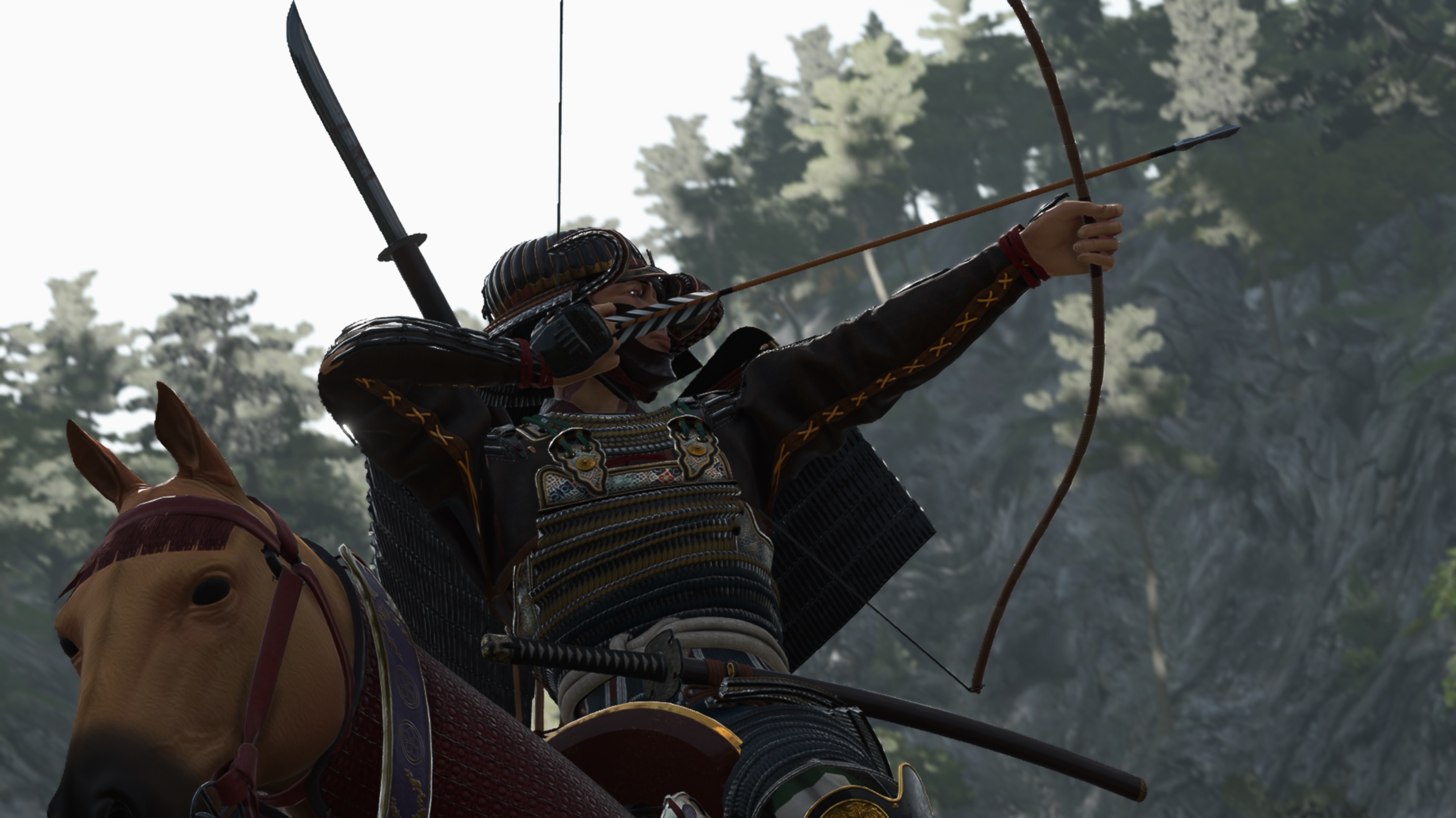
© TaleWorlds Entertainment, Dockside Studios

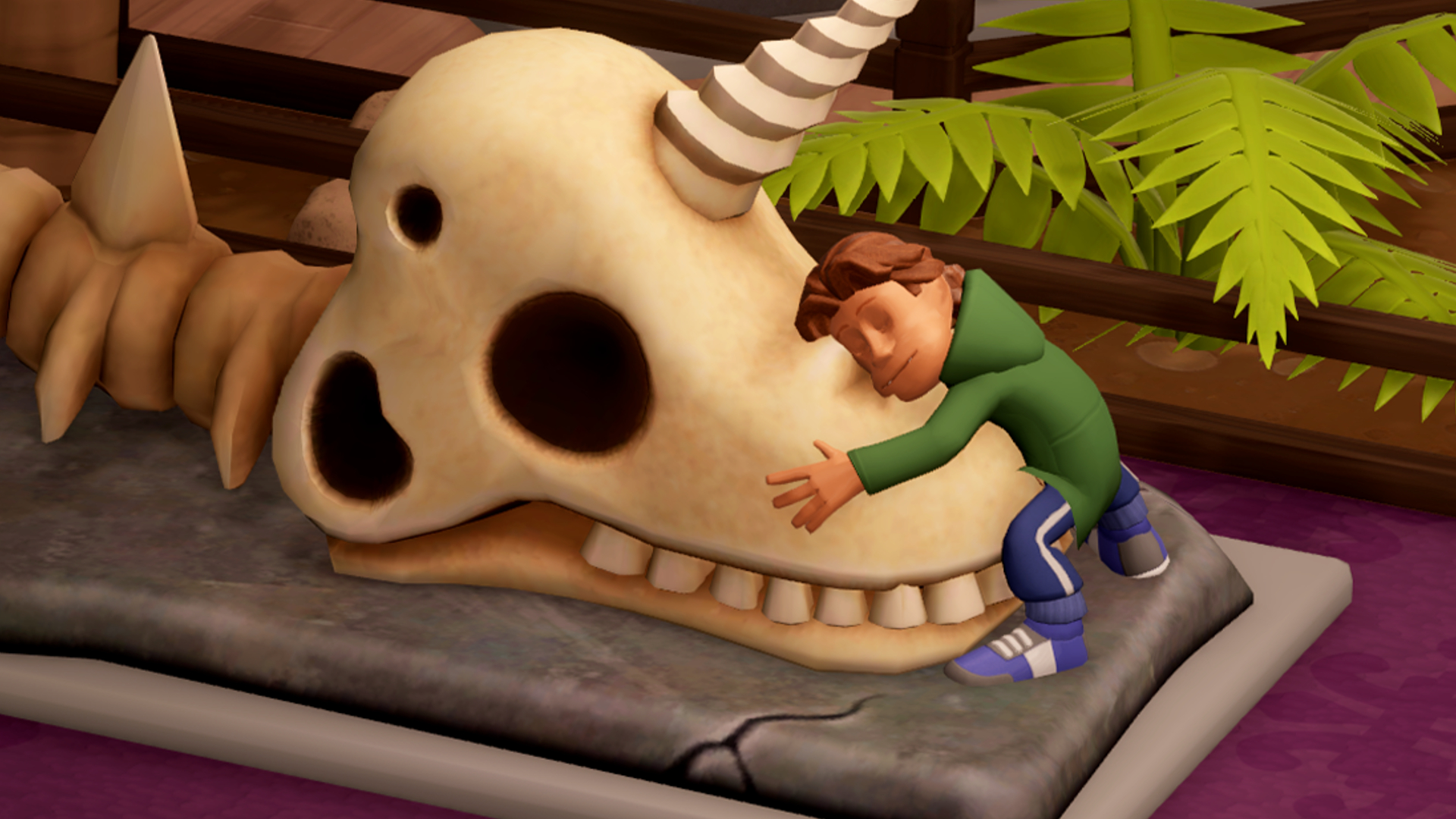
© Sega
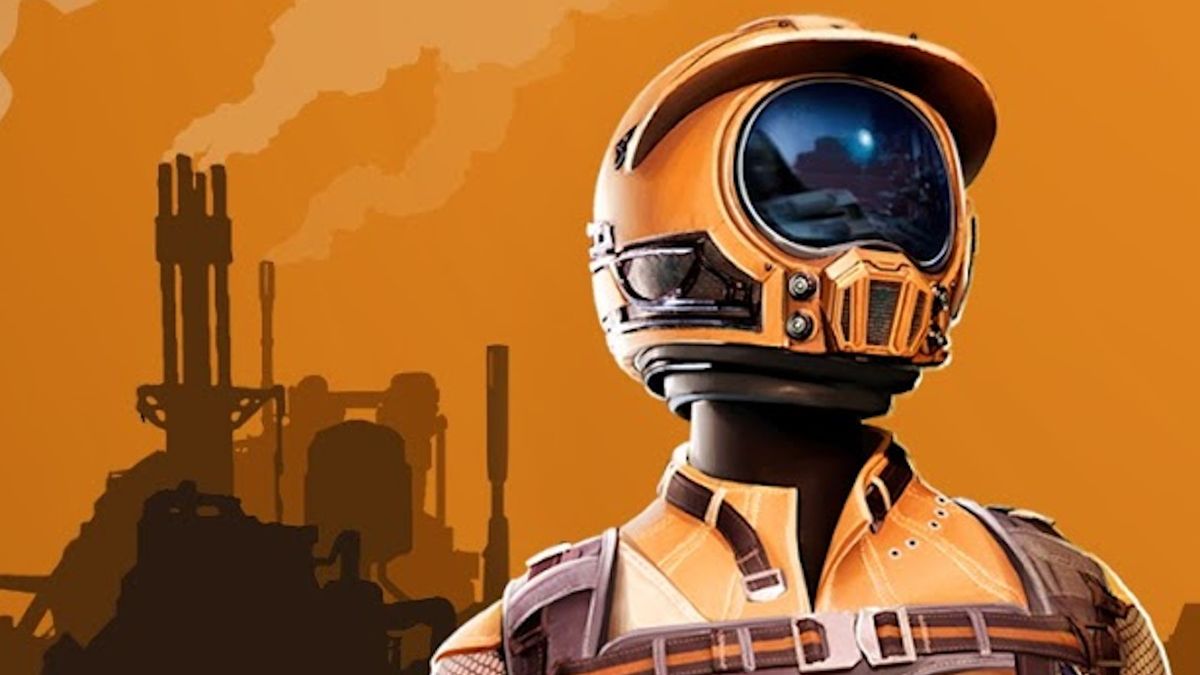
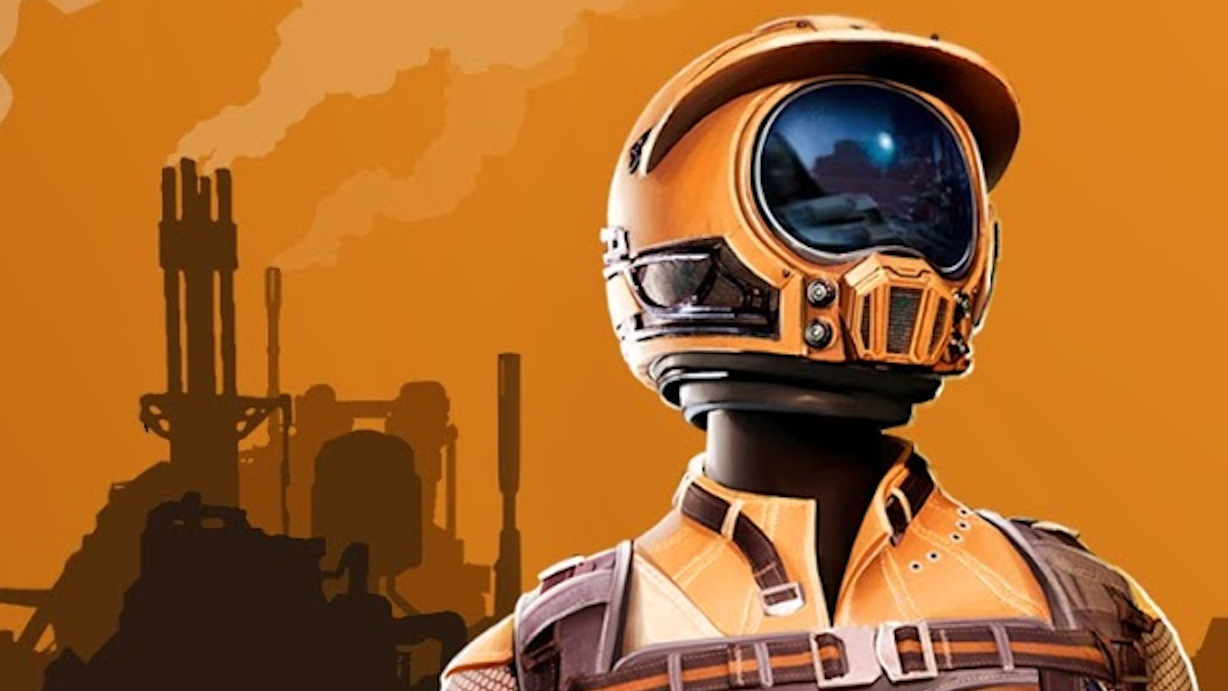
© Coffee Stain


© Future

There’s something about Sonic games where I kind of let my guard down and just enjoy them for what they are. And I’m happy to say that I’ve genuinely enjoyed my time with Sonic Racing: CrossWorlds, which I played an hour of during Summer Game Fest. It’s a kart racer that, in my short time with, nails the core tenets of a good kart racer – fast and intense races, powerups that turn the tide and leave you salty, and a good vibe that celebrates the characters from its source material. I can’t really ask for much more than that, yet there’s still more to chew on that we haven’t seen in previous Sonic racing games.
Let’s start with the CrossWorld mechanic, which varies up each race – the first lap starts on the selected track, then whoever’s in first place in the moment chooses where the entire race warps to for the second lap. This can range from an icy world with aurora borealis in the skybox, to a storming sea among a ship’s wreckage, or a volcanic zone with laser grids as obstacles. And then the third lap returns to the normal track. It’s a novelty that you may get used to over time, but it does provide some level of dynamism from race to race and adds a bit of unpredictability to keep things fresh.
In those crossing worlds, you’ll be flying, hovering, and surfing depending on where you warp to, and so there’s a great sense of variety to your vehicles since you’re not just on the ground drifting with your karts. I quite like the flying sections since your aircraft controls well and brings a certain verticality that’s surprising for a kart racer. If anything, Sonic Racing: CrossWorlds is blasting your eyeballs with chaos happening on screen, and maybe overdoing it. Not that it’s a major complaint I hold against it, but this is a very visually busy game to the point where it’s sometimes hard to tell what’s really going on – and I think these moments are more in service of the spectacle rather than being a serious competitive racer.
However, it does have that competitive edge with how you outfit your kart. You can customize parts like the body, tires, and boosters to tweak stats such as top speed, acceleration, and handling. What’s more is that you can attach perks to your kart as if it’s a loadout. You get six slots for attachments, and some attachments take up more than one slot – for example, I used a three-slot acceleration booster and a two-slot perk that improved my recovery time after getting hit by an item. And these things actually affected my performance in a meaningful way. I got hit with a rocket in lap three alongside another racer, but was able to pull ahead of them significantly after getting hit because of both of those perks I equipped. So, if you’re really serious about kart racing, I think there’s room for being a real sicko about it.
I only had access to the Grand Prix modes, which pits you in a series of four races, awarding points for your position and determining a winner by the end of the series. It’s pretty standard stuff with a few quirks along the way. I’m not sure if this is embedded in Sonic lore, but one racer will be declared a rival mid-Grand Prix and will act more aggressive toward you and stay more competitive throughout the series. The fourth and final race will also reward more points for first place, so you can turn the tide at the last minute if you’re a few points behind. However, I’m curious about how the other game modes in Sonic Racing: CrossWorlds will play out, because as fun and dynamic as normal races are, longevity will rely on Sonic Team being able to capitalize on its potential in other creative ways.
Perhaps some of that will come from its crossover characters – not only is this about Sonic as a whole, it’s a celebration of Sega’s recent history as well. During Summer Game Fest, Sega revealed that characters like my precious boy Kasuga Ichiban from Yakuza / Like A Dragon, Joker from Persona 5, and my vocaloid queen Hatsune Miku will all be part of the roster. Seeing Ichiban relive his days of Dragon Kart from the 2020 RPG is adorable and a welcome extension of his character, while seeing Miku on a hovering board racing through Sonic worlds is enough to get me bought in (and we should have Miku in more games, to be honest, shout out to Fortnite). It’s not like crossover characters are a new thing for a Sonic racing game – I mean, look at the wild lineup for Sonic and Sega All-Stars Racing. But Sega’s catalog has grown a lot since then, so perhaps this new era of characters can spice things up in a way that makes more sense.
Sonic Racing: CrossWorlds doesn’t have to revolutionize the kart racing genre, and I think it’s staking its claim on being a fun and carefree racer that celebrates Sonic and the larger Sega pantheon. It’s a vibe, and one that I’ve enjoyed and will look forward to drifting through when it launches on September 25 of this year on the last two PlayStation, Xbox, and Nintendo consoles, as well as PC.

Capcom has been firing on all cylinders with its marquee franchises – Monster Hunter is seeing increasing success, the Resident Evil train is continuing to roll, and Street Fighter continues to be a staple in the fighting game community. It has a new Onimusha on the way, and the last time we saw Devil May Cry was on a high note. But every now and then, Capcom experiments with something new, to varying degrees of success. And that latest experiment is in Pragmata, a sci-fi third-person shooter that stole the show for me at Summer Game Fest 2025 – even after just a brief 15-minute hands-on demo.
Another sci-fi third-person shooter may not sound too enticing on the surface, but Pragmata is an example of how a single idea can go a long way in distinguishing a game from the rest of the pack. Here’s the thing – in Pragmata you don’t just damage your enemies by shooting them, you have to hack them to open up their weaknesses. The way this works is by aiming down sights and engaging in a hacking minigame where you navigate a five-by-five grid using the face buttons to draw a path that connects specific nodes together. And you have to do this in real-time. Along that path, you can hit additional nodes to inflict status effects or open up weak spots, which can be risky when you’re locked in a room of multiple menacing robots chasing you down.
If you’re nimble enough with your rocket-boosted dodge and smart with your positioning, you can pull this off unscathed, and it is so damn satisfying when it all comes together. When you’re mostly fighting in tight spaces, creating space to hack and shoot can be challenging. Pragmata isn’t exactly a fast-paced game in the same way as Vanquish or Returnal, and it moves more like a Dead Space or Gears of War, and I enjoy that chunky, heavy feel. You’re also not outfitted with a ton of weapons – while you have a six-shot pistol with unlimited magazines, you pick up disposable weapons like a slow, powerful heavy rifle and a Bola gun to temporarily immobilize enemies. These effective, limited-use weapons push you to be more resourceful and make combat more interesting.
Since you’re not blasting through waves of robots and drones, the combat encounters feel more deliberate – and I think that’s important for not overdoing it with the hacking minigame. My worry for now is that the novelty of the hacking minigame will wear off the deeper you get into Pragmata, but that’ll be determined by how the gameplay mechanics evolve and the way further combat encounters present new challenges. I’m actually bummed that the demo ends right when you approached a huge mech for what appeared to be a boss fight because it could’ve been an opportunity to showcase more of Pragmata’s potential.
Hacking is also integrated in environmental puzzles and exploration, presenting you with different styles of sequential button prompts to deactivate security locks or access terminals. Little things like this to break up the pace are important in a fairly linear game where you’re chomping at the bit for the next big fight. You need that variety to balance out even the best parts of a campaign, and I at least enjoy the fact that engaging with levels still revolves around the hacking premise in some form.
Whether it be in combat or in exploration, I find a lot of fun in games that give you a more active element to engage with in its core gameplay. Although completely different genres, the timing-based mechanics of Clair Obscur: Expedition 33 made its turn-based RPG combat feel fresh, and even the gesture-based inputs for abilities in Scarlet Nexus were a fun way to distinguish itself from other action-RPGs, which I still praise to this day. If Pragmata can build on its best ideas in smart ways, it might be able to wedge itself into this conversation.
The demo didn’t have much in terms of story (and I’m glad it focused on its enticing gameplay hook instead), but it does leave me curious as to what the hell is going on in Pragmata. The basic premise is that you’re stuck on a high-tech space station on the moon, and you control a man named Hugh who dons a mech suit and uses a small arsenal of high-powered firearms, all while a mysterious little girl named Diana, who’s the hacking genius, sits on your shoulders to hack enemies. But even if the story is simply a vehicle to take you through its uniquely thrilling combat scenarios, I’m inclined to believe that’s all it has to be.
I had no idea what Pragmata was when it was first revealed in 2020, and after years of silence and delays, we know that it's real and on its way in 2026. I’m not expecting it to be the next greatest game or become a pillar of Capcom’s catalog, necessarily, but I’m all for new and well-executed ideas – especially at a time when AAA releases sometimes blend with each other.

Cuphead did something in 2017 that we'd arguably never seen before in a video game, or at least nowhere near the degree Cuphead went to: it built an entire game around completely hand-drawn art and animation a la a 1930's cartoon. We haven't seen it since probably since doing all of that painstaking visual work by hand is incredibly difficult, time-intensive, and laborious. But now, a new hand-drawn and hand-animated project is getting ready to grace our PCs and consoles. It's called Mouse: P.I. for Hire, and fully handcrafted art is about the only thing it's got in common with Cuphead. Mouse is its own, equally gorgeous game, and after getting a look at a hands-off demo, I'm just as interested in it as I was when I first saw Cuphead. Which is to say, I’m very interested.
As you can obviously see, Mouse is in black and white. It's reminiscent of the Steamboat Willy era of early animation, complete with guns that are always wobbling even when they aren't in use, as if they're made of rubber. (More on the guns in a bit.) As you can also plainly see, Mouse is a first-person shooter. In it, you play as Jack Pepper, who in-demand video game voice actor Troy Baker plays with a stereotypical-on-purpose New York accent. He's an early-20th-century gumshoe, after all, see? He's got to sound like one.
What I really liked about the demo I saw of Mouse was that it wasn't just a mindless run-and-gun first-person shooter (not that there's anything wrong with that). Instead, the mission I saw part of was set at an opera house, where Pepper had to find and question the stage designer. We started at the back door, where we spoke to a waiter and asked about Roland, the aforementioned stage designer. He hasn’t seen him, so in we go to investigate for ourselves.
Inside, the kitchen gives you a better look at the visual aesthetic at play here. Notice how the characters are 2D within the 3D space, not unlike the monsters in the original Doom. A peek through the porthole window of the kitchen door shows off one of Mouse’s detective-y features: reconnaissance, as Jack takes a photo and sees some members of the Big Mouse Party – aka not guys we want anything to do with.
Moving to the back of the kitchen, we meet up with a slick waiter who’s happy to help sneak us upstairs to where we need to go quietly – for $30. We decline the bribe and instead find a vent we can sneak through. A bonus stash of cash hiding in the vent is appreciated, but the bottom falling out of the vent, crash-landing us back outside where we started, is very much not appreciated.
Attempt number two takes us back through the kitchen and into the same vent, carefully crawling around the newly made hole in the floor and taking us to the dressing room, where a Thompson machine gun and some ammo await. You’re not supposed to be in here, of course, and the Big Mouse Party members don’t take kindly to your presence. It’s here that we get our first look at the first-person shooter combat, including one of the gorgeous reload animations.
We hear a muffled voice that might be Roland, but first a safe gives us a chance to see the lockpicking minigame in action, along with what the safe was hiding: a cup of coffee? Then things get really loud, as the wall in front of us blows up and we have to snuff out the bad guy that emerges from the smoke before using TNT ourselves to make a hole in the floor so we can make our way down into the bowels of the opera house.
Finally, we’ve found Roland. He’s been beaten up by the extras, who Jack deduces aren’t extras at all, and learns the Big Mouse Party’s real plan: to assassinate mayoral candidate Stilton, who’s sitting in the balcony for that evening’s show, during intermission, using the cannon on stage that is both full of live ammo and pointed directly at him.
Fast-forward to more combat, including the shotgun, which looks like it packs a nice wallop – and also has a pretty awesome reload animation of its own. Plus a look at explosive barrels that leave the bad guys burning in the most cartoonish way possible. There’s even an ice barrel – liquid nitrogen, perhaps? – that freezes nearby foes when detonated, allowing you to kick them so they shatter into a thousand pieces, Terminator 2-style. Moments later we also got a look at the third weapon featured in the demo: the turpentine gun, which melts these cartoon characters who are literally made of paint, not unlike the Dip from Who Framed Roger Rabbit?
After a bit of platforming and fighting a new helicopter-tailed enemy type, we found our way back upstairs…only to have a trap door below our feet open up, dumping us back into the basement. It’s here we meet the Old Rat Stuntman, who teaches Jack the double-jump maneuver. After testing it out and discovering a secret – a baseball trading card of “Brie” Ruth (get it, because they’re mice and love cheese?) – we find our way back on stage to sabotage the cannon and save Stilton, which triggers a boss battle with a raging opera performer. The turpentine gun finishes him off, and we get a look at its reload animation, which if you ask me is even cooler than the others we’ve already seen.
The fire from the stage has spread to the rest of the opera house, and we’ve gotta get out of here. But we’re going to have to shoot our way out using every weapon at our disposal. No problem for Jack Pepper. Let’s watch some combat now, uninterrupted.
Finally escaping the building, we meet up with the stage designer, who coughs up what he knows about the performer who’s vanished. Something about a secret lab underneath his mansion? No, that doesn’t sound suspicious at all… And with that, we exit the level and the demo ends.
And so, though I haven’t yet played it myself, from what I’ve seen of Mouse – and you just saw most of what I saw – I’m really eager to give it a try. It seems like it’s got the right lighthearted, somewhat comedic tone while also being self-aware but offering a solid first-person shooter at the core of it. After all, as gorgeous and admirable as its hand-drawn art and animation are, if the gameplay can’t back it up and also maintain my interest in it over the course of its campaign, then it won’t really matter how pretty it is. But at this point, I’m extremely optimistic.
Ryan McCaffrey is IGN's executive editor of previews and host of both IGN's weekly Xbox show, Podcast Unlocked, as well as our monthly(-ish) interview show, IGN Unfiltered. He's a North Jersey guy, so it's "Taylor ham," not "pork roll." Debate it with him on Twitter at @DMC_Ryan.


© 343 Industries
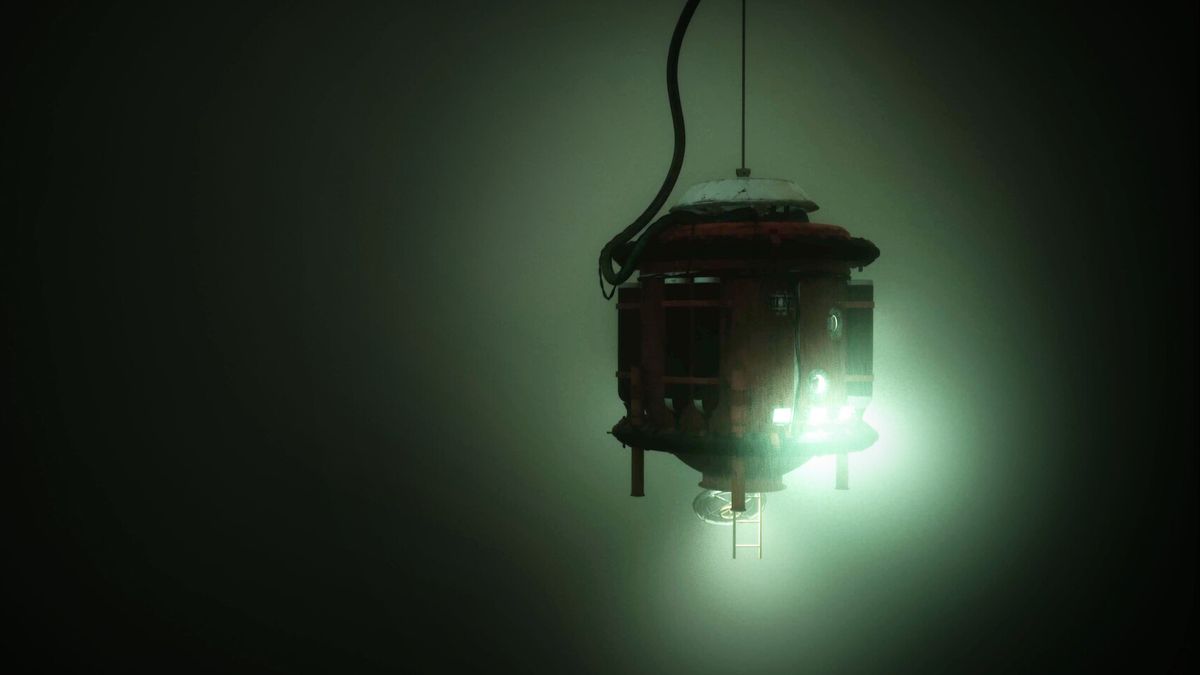
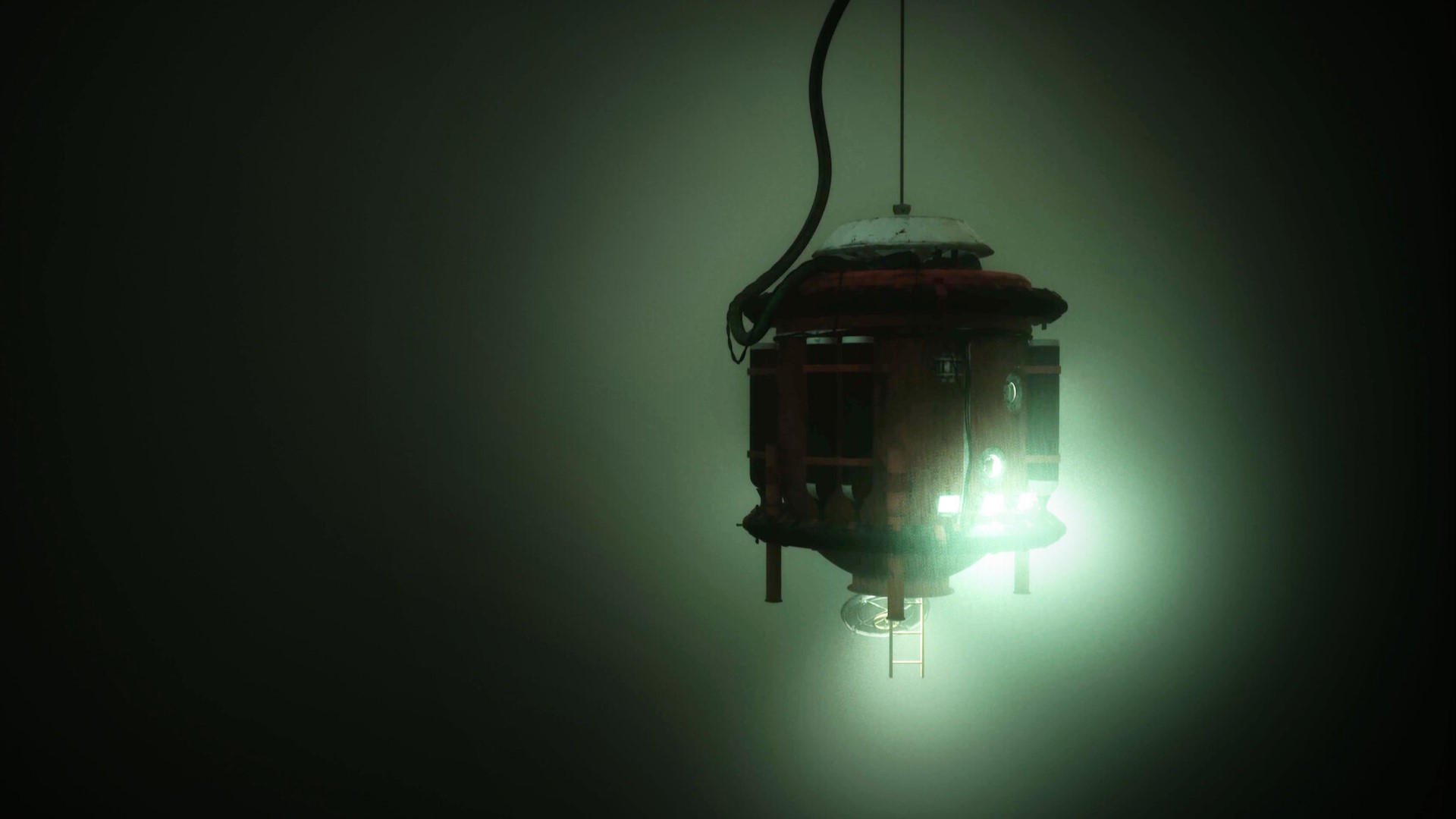
© The Chinese Room
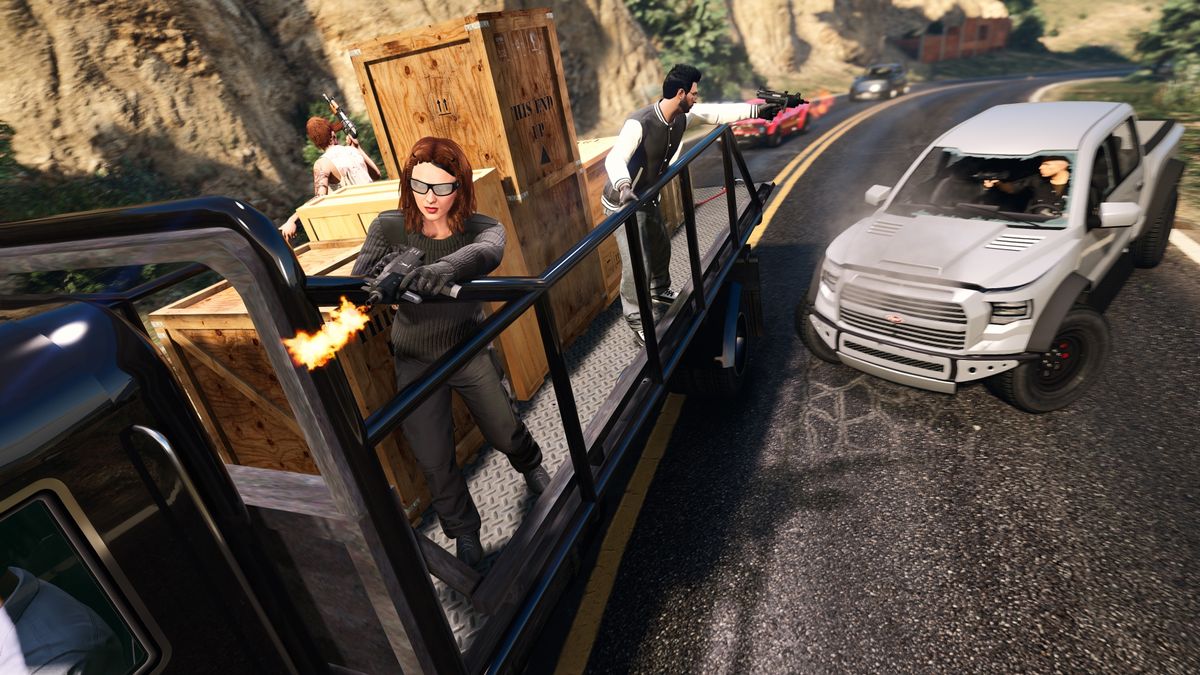
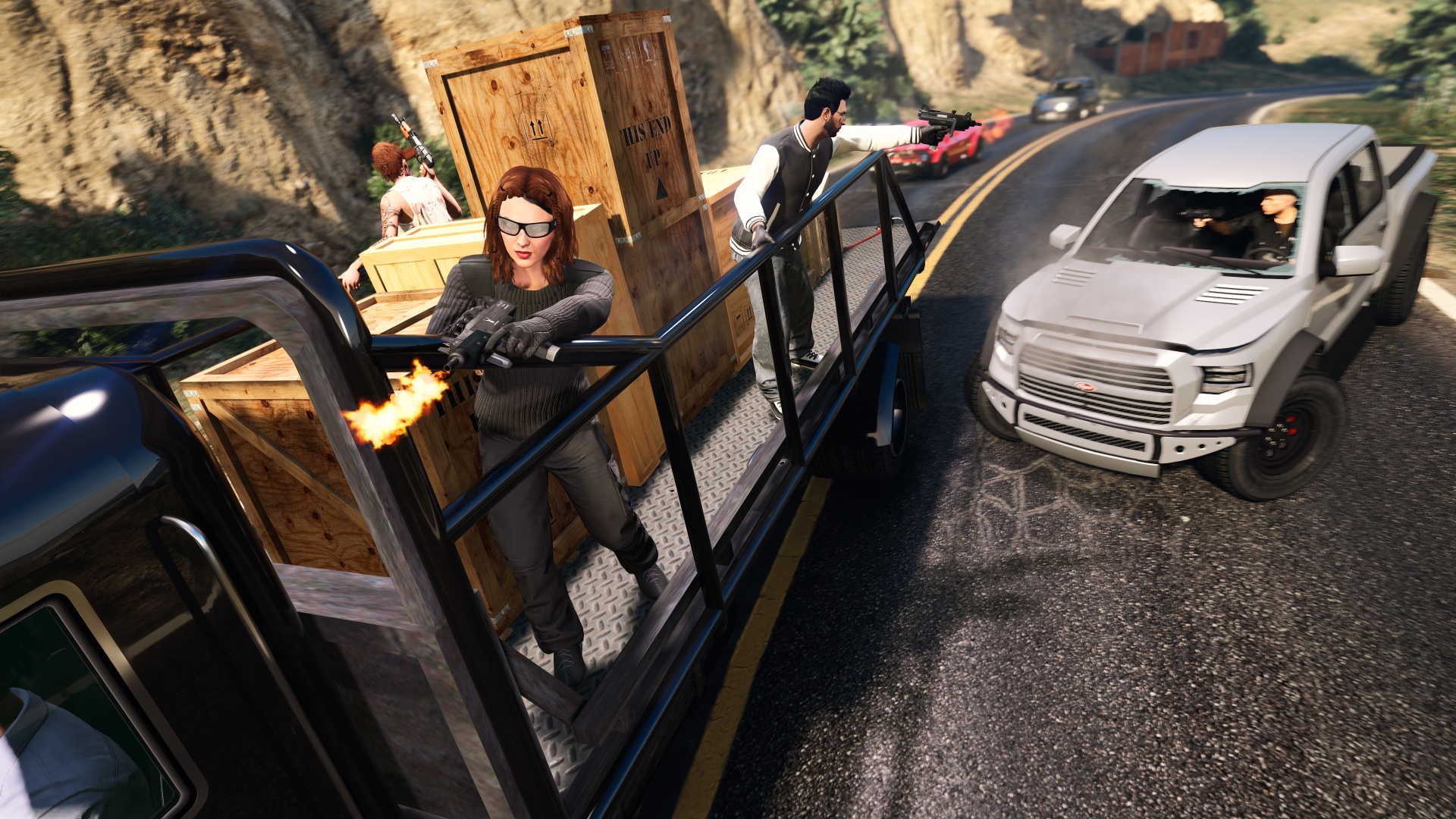
© Rockstar Games


© Kong Orange, WiredFly
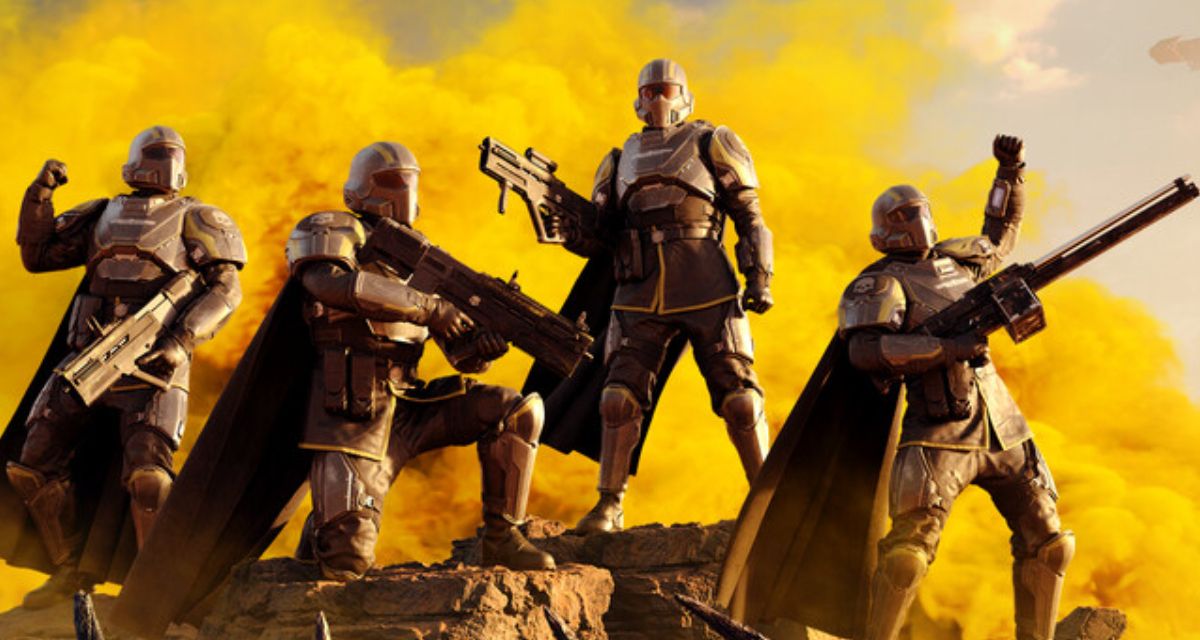
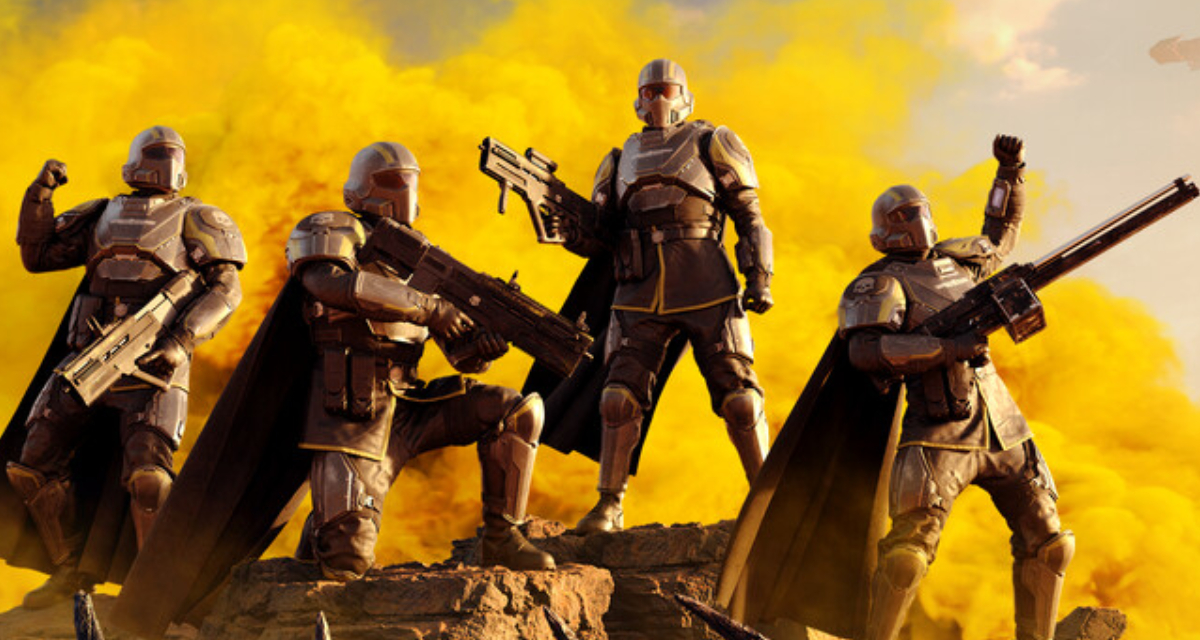
© Arrowhead
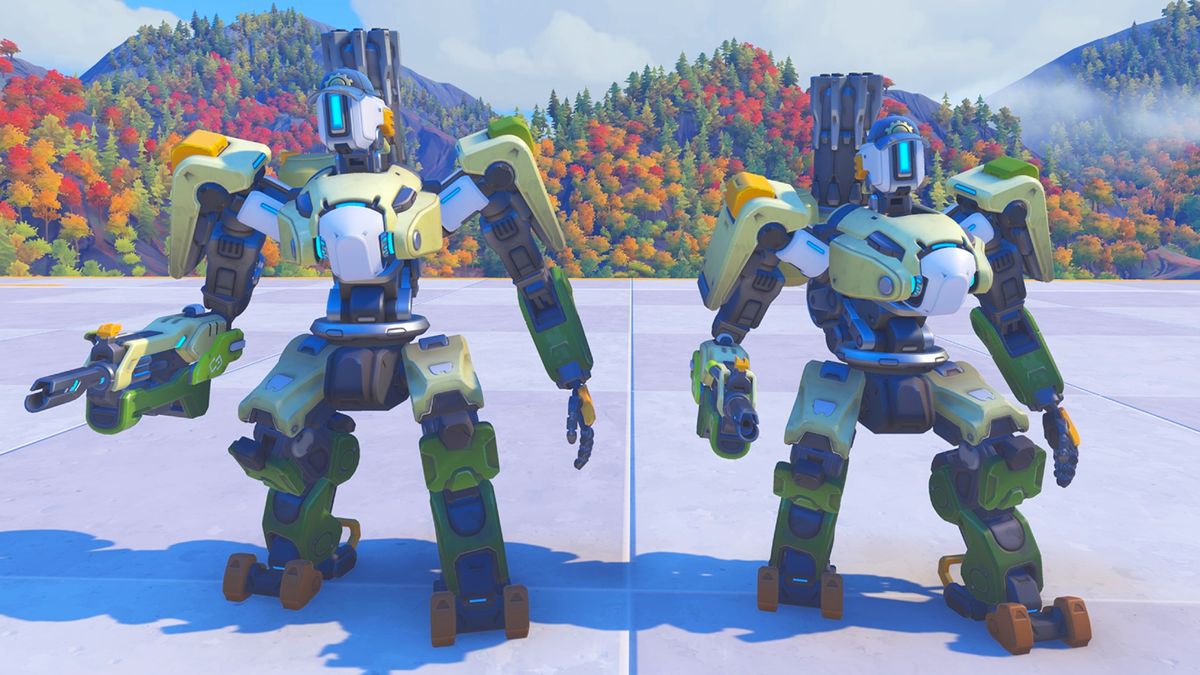
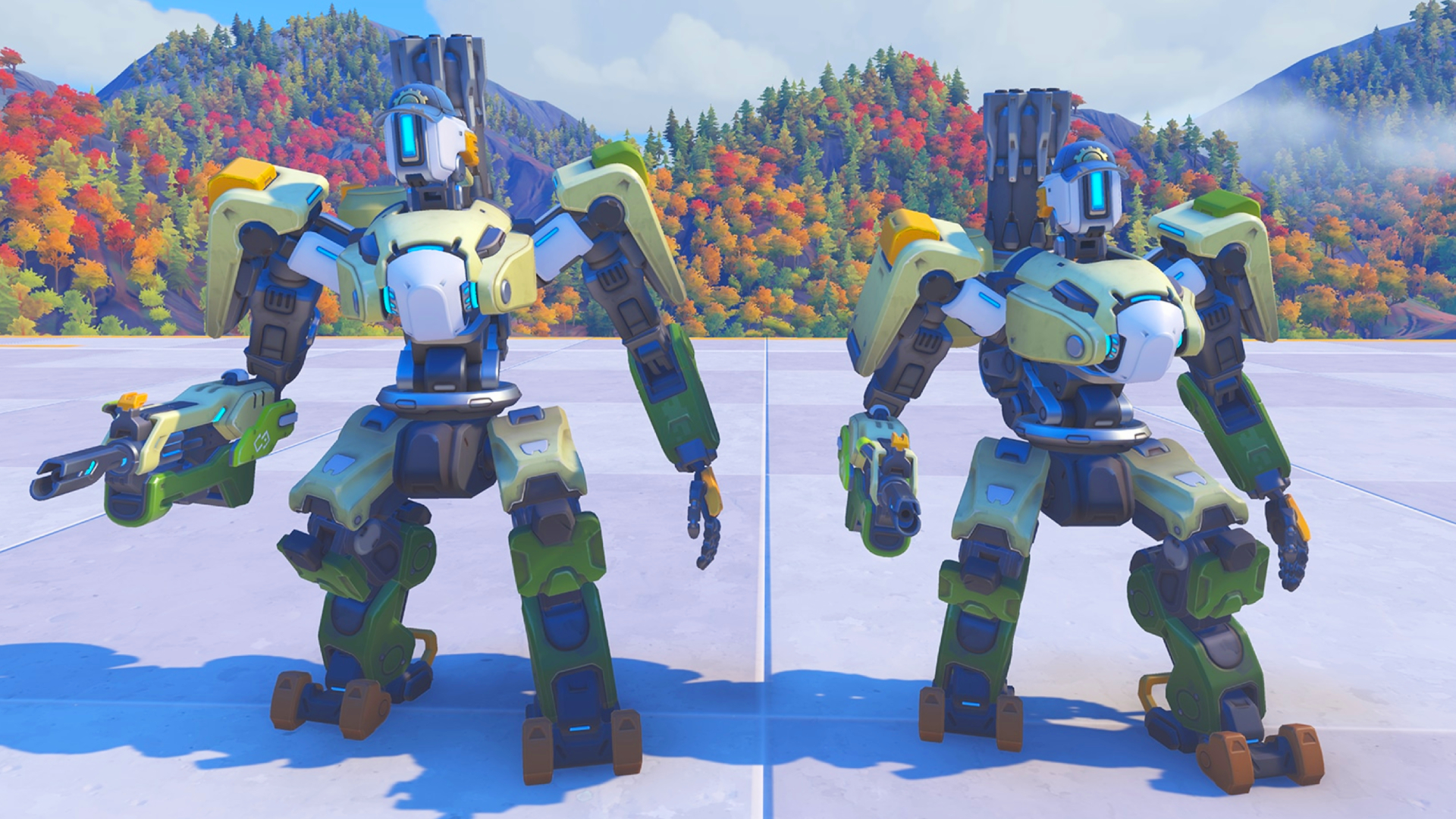
© Blizzard Entertainment

Take it from me: as an avid reader, being busy with work and life can often make it difficult to sit down and get lost in a good book. I love physical media and displaying books on my shelves, but I hardly have the time to actually read them. Audible helps mitigate this roadblock with audiobooks, and as someone who lives in Los Angeles, the service helps me kill two birds with one stone: I get to experience the books and stories I'm interested in and it helps long commutes and bumper-to-bumper traffic feel like a breeze.
Here, I'll be breaking down the various prices and plans Audible has to offer, and if you're gung-ho about sticking with physical books, check out Amazon's buy one, get one 50% sale that includes dozens of books and graphic novels.
Yes, you can check out Audible via a free trial right now. It lasts for 30 days, after which you'll be charged $14.95 a month and can cancel it at anytime. When you sign up for the free trial, you'll get two audiobooks for free.
Audible is an audiobook and podcast streaming service owned and operated by Amazon. You can purchase products individually or select a subscription that best suits your needs. If you're a subscriber, you'll receive credits for redeemable monthly content and be able to access a curated library of even more content.
The service has over 1 million options to choose from. If there's a book you're interested in, odds are you can listen to it here. Most titles will get the audibook treatment at some point, with some of the more popular series (like the new Hunger games novel) will have one available on day one. It's great for everything, from historical non-fiction to modern LitRPG.
Audible offers a varying selection of subscriptions and purchasable credit options. The subscriptions offered are Plus at $7.99/ month and Premium Plus at $14.95/ month. Then you can add on to these plans with credits. Two credits a month is $22.95, 12 credits is $149.50/ year, and 24 credits is $229.50/ year.
Here's how the different subscription and credit options shake out. Once you're a subscriber, you'll earn credits when as part of your plan. Credits are used to purchase anything from their catalog regardless of price.
This is the subscription. You'll have acces to thousands of different audiobooks and podcasts from the Plus Catalog.
This is what I would subscribe to if you see yourself using the service a lot over time. You get all the perks form the Plus plan, and you'll get one credit per month to purchase a book, which you get to keep even if you cancel your plan. You also have access to exclusive sales and discounts.
You'll get two additional credits to spend however you'd like. Part of Audible Premium Plus.
You'll get 12 additional credits to spend however you'd like. Part of Audible Premium Plus.
You'll get 24 additional credits to spend however you'd like. Part of Audible Premium Plus.
You can access Audible pretty much anywhere. To start, you can download the app on your mobile device or tablet via the iOS, Android, and Google stores. You can also access Audible through a Kindle device if you have one. Finally, if you have an Amazon Fire TV, you can download the Audible app there too, which is great for cleaning sessions or to just have a book going in the background at home.
Myles Obenza is a freelance writer for IGN. Follow him on Bluesky @mylesobenza.bsky.social.

I remember the first time a boy made me a mixtape (okay, mix CD, same diff). It wasn't even a romantic gesture - he made them for all our friends. Mine had a now-embarassing mix of Morrowind music, Naruto OPs, Queen and Kansas (inexplicably), and uh, this song. It was a wild mix of nerd stuff and absolute bangers that made no sense together at all.
So I can appreciate a really, really good mixtape, one that makes you feel big feelings and think big thoughts. Sure, I make my own Spotify playlists now for myself, but there's something tangibly retro about someone handing you a physical item of songs, perfectly selected and ordered, that they curated for a person, a moment, a space and time.
So what if that, in video game form? That's the entire premise of the aptly named game Mixtape that I previewed at Play Days last week. Mixtape follows three teens: Rockford, Slater, and Cassandra, though it's told from the perspective of Rockford and their final mixtape of the summer: a collection of musical hits to encapsulate their last night together with their best friends. See, Rockford has big dreams, and is headed to New York in the morning to take a huge, ridiculous swing on a future career that's incredibly, appropriately teenager of them and unlikely to pay off (though Rockford's plenty confident). So Rockford has assembled a pretentious lineup of perfect songs, each backing a different vignette from the crew's final night of mischief (and, occasionally interrupted by a flashback or a song they didn't necessarily intend to include).
Look, even if Rockford's whole schtick is being a music elitist, they're right about one thing: they do compile an excellent mixtape. The whole game opens on "That's Good" by Devo, and the segment I played proceeds through Jesus and Mary Chain, Alice Coltrain...I don't want to spoil it too much, because the songs themselves are such a fundamental part of each moment and do a lot of heavy lifting to play into Mixtape's overall aura of nostalgia.
In fact, I think one thing I appreciate most about Mixtape is that aside from the music, this isn't a game jam-packed with specific pop culture references like so many other nostalgia plays love to do. The songs have got it covered. I'm not stopping every few seconds, pointing at an artifact or a joke and going, "I recognize that!" And yet, Mixtape manages to effectively capture a very specific flavor of reminisence for one's youth, and that feeling is injected into everything from Rockford's room decor to how the characters speak to the gentle, golden, almost-autumnal light permeating everything in the opening.
Here's another thing that struck me: the three main characters are, frankly, pretty annoying! And I love it! They're such teens. Older teens, sure, on the cusp of adulthood, but teens! I'm 34! I can't take them remotely seriously, and I'm not supposed to. The trio, while distinct in their personalities, all carry a slightly exaggerated self-obsession, that feeling I remember well from being 17, 18, 19, and thinking my concerns were at the center of the universe. Obnoxious quirks and all, I'll be happy to spend a full evening with all three in the full game.
The actual meanest thing I can say about Mixtape is that at least in the snippet I played, you're not doing very much. There's some skateboarding, and a sequence where you careen through the town on a shopping cart, and in both situations you steer, but I'm not sure there's really any consequences for doing either activity well or poorly, or any reason to try very hard. You can headbang to music played loud in a car. Mostly, from what I saw, you walk around a room and look at things while talking to your friends. The most interesting gameplay was an extended section where you simulate two awkward teenage tongues making out in a simultaneously hilarious and disgusting interchange. I get the sense that the wider game will likely play out more as a series of minigame vignettes that one specific flavor of video game, but as it stands I'm hard-pressed to explain to you what it is you're going to be doing, mostly, throughout the rest of Mixtape.
The thing is, whether the rest of the game turns out to be action-packed or not, I'm not really sure it matters for what Mixtape is going for. This is a vibes game through-and-through, and Mixtape's vibes are impeccable. I'm happy to let Rockford take me along on whatever journey they and their friends are about to head out on, one song at a time.
Rebekah Valentine is a senior reporter for IGN. You can find her posting on BlueSky @duckvalentine.bsky.social. Got a story tip? Send it to rvalentine@ign.com.

Father's Day is only a few days away, but fortunately there are plenty of great deals available that can still arrive by June 15. Your odds are even higher if you've signed up for a subscription that offers expedited shipping, like Amazon Prime. Some of the most popular deals this week include discounts on the Apple AirPods Pro earbuds and iPad tablets, Sonos speakers, PlayStation Portal, and Switch 2 accessories. You also don't want to miss the BOGO 50% off books, movies, and puzzles promotion currently going on at Amazon.
Apple's newest AirPods are all on sale and would make a great gift idea for Father's Day, which lands on June 15. Starting with the highest end model, the second generation Apple AirPods Pro wireless noise-canceling earbuds is $169 shipped (normally $240). The next step down, the Apple AirPods 4 with ANC (active noise cancelation) is down to $148 (normally $179). Finally, the value-packed AirPods 4 without ANC drops to $99.99 (normally $129).
Amazon has dropped another buy one, get one 50% off sale on books ahead of Father's Day weekend. The online retailer has continued to be one of the best places to buy books online in 2025, and sales like these are the best time to buy new books for lower prices. This particular promotion includes a variety of popular new releases as well as ongoing bestsellers at lower prices than you'll find anywhere else.
Alongside books, this sale also includes some popular 4K movies as well as board games and puzzles. So if you're looking for a good Father's Day gift and also want to pick up something for yourself, this is a great chance to save. You can check everything included in the sale below or scroll down for some of my top book picks within.
For most people, the iPad (not the Air, Mini, or Pro) is the best model to get because it offers all the benefits of iOS as well as snappy performance at an affordable price. The current generation model was released on March 12, 2025, over two years after the previous generation (October 2022). The upgrades include a more powerful processor (A16 vs A14), more RAM (6GB vs 4GB), and more storage (128GB vs 64GB), all. Best of all, the launch price of $349 is actually lower than when the previous generation model was released, which was $399.
We've seen the official Nintendo Switch 2 case and it could be better for the price. It fits the console well enough, but the build quality and protection is lacking and it looks boring for a $40 case. If you want something that protects your Switch 2 while looking a lot nicer and still maintaining a slim profile, I'd suggest getting the tomtoc Slim Nintendo Switch 2 Carrying Case. In fact, it currently costs $36.99 on Amazon, which is a few dollars cheaper than the official case.
A jump starter is an essential part of car's emergency kit and you don't need to pay a premium for a cordless model that gets the job done reliably. Amazon is currently offering the Lokithor J400 12V 2,000A cordless car jump starter for just $38.97 shipped after you clip both $20 and 35% off coupons on the product page. This is a really great practical gift idea for Father's Day; when the time comes that he'll need to use it, he'll know that you're the one that got him out of a jam.
Sonos is kicking off its Father's Day Sale early. You can save up to 25% off its most popular soundbars and speakers, including the first discount I've seen on its flagship Arc Ultra soundbar. These deals are all available from Sonos direct with free shipping, but you can also pick them up for the same price at retailers like Amazon, Target, and Walmart. Father's Day is only a few days away, but there's still time to have your order delivered by June 15.
Make sure to select the "Save with Used - Like New" option
A new PlayStation Portal has never been discounted, even during the PlayStation Days of Play Sale that ran earlir this month, but at least you can save on a used one. Amazon Resale currently has a Used: Like New PS Portal in stock for $156.83 shipped. It retails for $200 new, so that's 22% in savings. A Sony warranty may or may not be included, but Amazon Resale items benefit from the same 30-day return policy you get for buying a new item.
Note: You'll see the price of a new PS Portal on the product page ($199). Scroll down a bit to see the Like New price.
Samsung's newest SSD - the Samsung 990 Evo Plus PCIe 4.0 M.2 NVMe solid state drive - is on sale today. Pick up the 2TB size for just $1299.99 with free shipping. This is a fast drive for both PlayStation 5 and PC gamers with speeds of up to 7,250MBps read and 6,300MBps write. It's currently $40-$60 cheaper than the Samsung 990 Pro and most (if not all) gamers won't notice the difference in performance.
Walmart is currently offering a brand new TCL Alto 8 Plus Soundbar for just $79 shipped. This 40" soundbar will sound much better than any built-in TV speaker. This is a 2.1.2 channel system that houses two height channels for Dolby Atmos surround sound. It also includes a separate wireless subwoofer to help round out the low end. This will sound miles better than any built-in TV speaker. It's Roku TV ready out of the box, features bluetooth for wireless streaming, and has HDMI passthrough with supports 4K and Dolby Vision, HDR10, HDR10+ passthrough over HDMI.
Other sizes also on sale
Panasonic is back in the TV game, and this time it's focusing on only offering higher-end Mini-LED and OLED models. Amazon is offering big discounts on the Panasonic W95 series TVs, which feature Mini-LED technology and local dimming. In a Mini-LED panel, the LEDs are smaller and more numerous, which allows for finer control of brightness levels within the same scene. The W95 is also a great candidate for playing games on a PlayStation 5 or Xbox Series X console because it's equipped with a native 144Hz panel that can run games in 4K at up to 144fps over HDMI 2.1.
Eric Song is the IGN commerce manager in charge of finding the best gaming and tech deals every day. When Eric isn't hunting for deals for other people at work, he's hunting for deals for himself during his free time.

Best Wishes to All is now streaming on Shudder.
A child with paper wadded into his bleeding eye sockets like they’re plugging a bloody nose. A human pyramid serving as a makeshift delivery table for a pregnant woman. A man flailing on the ground in his underwear, unable to see or speak because his eyes and mouth are sewn shut. With his feature-length directorial debut, Best Wishes to All, Yûta Shimotsu establishes a talent for eerie and indelible imagery, all wrapped up in a disturbing satire of what humans are willing to ignore in order to live their contented lives. But those unsettling images may be better suited to a trailer than the full-on movie that Shimotsu has made, whose story occasionally struggles to put them in context.
We’re in the realm of fables and allegory here, so Best Wishes to All is populated by fittingly unnamed characters who are more symbols than people. Our audience surrogate is a young woman (Kotone Furukawa) working her way through nursing school in Tokyo, reluctantly returning to the rural Anytown, Japan where she grew up. That’s where her grandfather (Masashi Arifuku) and grandmother (Yoshiko Inuyama) still live, and as the woman learns her parents’ arrival has been delayed, she seems distressed to be left alone with grandma and grandpa. We don’t quite know why, though we’re able to glean a vague sense of unease from an opening flashback that’s all unnerving slow zooms and ominous music cues.
The interactions start out awkward, in a banal sort of way, with the camera boxing the woman between her grandparents while they share a meal. But their behavior only grows stranger the longer she stays, like grandpa standing vacantly in the hallway, mouth agape as though his brain is tuned to the static of some occult radio station. They try to get their granddaughter to rub their eyeballs, and over dinner, they break into a fit of oinking while remarking that pigs want to be slaughtered. You know, the sort of freaky old folks imagery that leads a character to float “maybe it’s dementia” over the phone when, of course, it’s something much more sinister.
These scenes sound hackneyed, and they are to a point, but Shimotsu is at least drawing on relevant social context. We’re clearly meant to think about Japan’s disproportionately aged populace, even without characters saying things like “I’m sorry young people are sacrificed for old folks like me.” Best Wishes for All is certainly never subtle, but it does come into its own once its scope expands from spooky grandparents to the rot beneath society at large. With the most upsetting material broken up by a few scenes that play as dark comedy, conventional horror isn’t the aim here. Instead, Shimotsu synthesizes an atmosphere of wrongness from these oscillating tones – the sense of a world out of joint as its people embrace evil with a smile.
In a broad sense, that atmosphere is an expression of the granddaughter waking up to the true nature of her reality. The insulation of her youth falls away as she’s confronted with an immovable foundation of pain and horror. Best Wishes to All revolves around shocking supernatural practices, and by resisting the urge to cleanly lay out rules for a coherent mythology, it retains a captivating aura of mystery. The root of its discomfort is in a lack of understanding; the woman becomes unmoored from the world she thought she knew, all while loved ones tell her that everything has been this way all along. Here, society conducts itself like a ghastly mixture of the dinner table scene from The Texas Chainsaw Massacre and Ursula K. LeGuin’s “The Ones Who Walk Away from Omelas,” with one person comparing the granddaughter’s obliviousness to still believing in Santa Claus.
Best Wishes to All is an oppressive, emotionally draining experience, offering little reprieve from its misanthropy. A friend (Kôya Matsudai) of the main character’s who otherwise seems like an oasis of sanity muses that “the world couldn’t go on if everyone chased their dreams.” But even accounting for the larger goal of simply keeping the audience off balance, a few scenes (particularly ones involving the grandparents) indulge in bizarre and disquieting imagery seemingly for its own sake. These moments may look great in isolation, but within Best Wishes to All, they feel only tenuously related to what’s trying to be said, amounting to the dread-laden equivalent of a cheap jump scare.
Call it a symptom of Shimotsu stretching what’s roughly a Twilight Zone episode’s worth of story to feature length. Best Wishes to All was, indeed, a short film first, and it’s one of those films that can immediately be identified as such, because once its allegory comes into focus, it doesn’t have anywhere left to go. It can’t deepen our investment in the characters because they’re all metaphors, and it can’t explore their society because its foundation matters less than the message it’s built to convey.

Diablo is now playing in select theaters and available on demand and on digitial.
How best to describe the way Scott Adkins moves? The way he hangs in the air, twists mid-strike, and executes a kick to some dude's face, you'd swear he's a cobra that learned ballet – graceful, lethal, and awesome to watch. Diablo finds the 48-year-old action star (and one-time member of John Wick's High Table) in reliably nimble form, even if his latest character seems to be throwing those fists of fury with newfound restraint. Adkins plays Kris, a reformed bank robber smuggled into Colombia to rescue the tempestuous teen Elisa (Alana De La Rossa) from the clutches of her father, Vicente (Lucho Velasco) – who also happens to be Kris' sworn enemy and one-time partner-in-crime. (These things tend to overlap.) While Kris is willing to beat some serious ass in the process, it's fun to see a dash of reluctance added to Adkins' repertoire of endlessly thrilling VOD donnybrooks.
And, it seems, age. Diablo kicks off with Kris at an impasse with armed mules demanding extra cash for getting him across the border. Kris obliges, but his punches don't land with the finality he expects. You can see frustration and exhaustion on Adkins' face; Kris is giving his all, but these guys just keep getting up. Don't worry: He still walks away the victor, off to find redemption and retribution in equal doses. Adkins, who shares story credit on Diablo, is clearly in on the joke of a veteran martial artist coming to grips with his own mortality.
Kris' mission is a tricky enough endeavor without the added complication that Elisa doesn't seem to want saving. Though De la Rossa offers glimmers of caution whenever she's in a room with her movie dad, her character has long grown accustomed to the spoils of Vicente’s cartel life. From the jump, and after a few wild kicks to Kris’s head, it's clear Elisa has zero intention of being anyone's hostage – not this stoic lunatic decked out in Rambo’s jacket from First Blood, and certainly not anyone else's.
Diablo is directed and edited by Chilean filmmaker Ernesto Díaz Espinoza, who has a clear knack for grindhouse brutality even if his quieter moments lack the grit and atmosphere that his rowdier sequences have in abundance. Still, he doesn't come up short in terms of pulp silliness. With screenwriter Mat Sansom, Espinoza conjures a formidable and memorable adversary for our world-weary hero: El Corvo (Marko Zaror, who previously starred in Espinoza's martial arts thriller Redeemer), an ice-cold serial killer/hired heavy straight out of the Cannon stable of baddies. Equipped with a wicked prosthetic fist/razor-sharp dagger combo, El Corvo shares and even surpasses Kris' ability to walk away from every fight, regardless of the odds. One mid-film melee sees the heavy entering a club and flooring everyone in his path; in another stunning moment, he dispatches an opponent so forcefully that the baseball bat his quarry was wielding spins in mid-air like a ceiling fan.
Naturally, El Corvo's objective is also to retrieve Elisa, and he, like Kris, has reasons for taking the job that hearken back to Vicente's darker days. As a typical movie maniac, El Corvo is not infallible; his tendency to woo his victims-to-be with treats (adopting a Dale Cooper philosophy of giving yourself a present once a day) can blunt his sinister effectiveness. And he conveniently loses his immaculate John Wick marksmanship whenever his crosshairs are trained on Kris. He also takes a page from the diabolical supervillain book, assembling an excruciatingly protracted death-trap finale where Adkins and Zaror tear into each other, unstoppable-force meets-immovable-object style, seemingly oblivious that Elisa is dangling nearby in mortal danger.
If Diablo has another flaw, it's the one found in some of Adkins' lesser outings: the script barrels through the particulars, with characters and motivations only sketched out enough to justify the next fight scene. That's hardly anything to gripe about, given how solid those fights turn out to be. And there's something awesome about how the personal stakes (which only grow more personal as Diablo goes on) of the story free Adkins to modulate his action-man brawniness for something slightly more restrained and mature. While Diablo remains eminently watchable martial arts schlock and may not offer as blistering a role for the actor as, say, 2019’s Avengement, it gives him a chance to display the many dimensions of his onscreen prowess, revealing hints of regret, guilt, and even more subtly, the wear and tear of age. Adkins still piles up KO after KO in Diablo, but after years of cutting through bad guys like a finely honed blade, it’s nice to see him portray the rust that’s built up under the sheath.

I play a lot of competitive shooters – and I mean a lot of competitive shooters. Whether it’s being an unfortunate son in Grey Zone Warfare, flipping cards in FragPunk, or smashing and grabbing in The Finals, this has been my default “gaming night with the friends” genre since I was in school many, many (many) years ago. And even after many thousands of hours spread across Destiny, Call of Duty, Halo Infinite, and Valorant, there is something about the action on the Rainbow Six series that stands out and just feels right. Now that Rainbow Six Siege is celebrating its tenth year with a massive new update in the form of Rainbow Six Siege X, it seems like a perfect time to reevaluate how this popular tactical shooter stands among its peers after a decade of tweaks, updates, and additions.
The fundamentals of Siege are as strong as ever, which is great to see. Bomb is the headliner mode: Two teams take turns on offense and defense trying to either fortify position and protect a bomb, or battle their way in to defuse it. That setup has been around for decades (and is also the core mode of games like Counter-Strike) but Siege’s distinctive entrenchment and destruction mechanics make its version stand out, and both sides of that coin are extremely fun. I love throwing down a bunch of temporary walls, setting up razor wire or other boobie traps, and getting ready to ambush attackers. And it’s just as satisfying on offense, knowing the other team has set up similar defenses, and blowing a wall open with some thermite to bypass all of it and get the drop on the enemy. The fast time-to-kill rewards position over twitch skill, and I appreciate the way the relatively slow aim-down-sites animation forces you to decide before a fight how you want to engage. This is a thinking man’s shooter, through and through.
The cast of playable characters is an impressive 75 Operators. Each has a different loadout and slightly unique playstyle, with half reserved for Attackers and the other playable only when you are on Defense. They do a great job catering to different playstyles, whether you want to smash through walls with your big hammer as Sledge, or dash around at high speed as Oryx. It is surprising that the Siege X update didn’t add anyone new to the roster, though we did get Rauora just a few months ago.
In addition to Bomb, Siege X adds a new 6v6 mode called Dual Front, but that one hasn’t yet grown on me in the time I’ve spent with it so far. Here, both teams have an area to attack and another to defend simultaneously. There are no restrictions on what type of character you can use, though only 37 of the 75 operators are eligible selections. The single available map is enormous, which, combined with the fast time-to-kill of Siege, means you tend to spend just a very small fraction of the match duration involved in actual action. Unlike in Bomb you can respawn after you die, which seems like it would make this a good mode for onboarding new players, but so far I feel like it really just takes away the pulse-pounding stakes that make Siege what it is.
Siege X is built around a limited free-to-play model. I say limited because, while you can absolutely play Siege X for free, it locks some key modes, like Ranked and Siege Cup, behind a paywall. You’ll need to spend around $20 USD if you want access to those. That seems like an odd choice for something that already has a robust shop and battle pass system for generating money, particularly when other popular games, like Marvel Rivals, don’t do any such segmentation between paid and unpaid players. The community has long been a bit weary of how slow progression and a protracted Operator unlock pace push people towards the paid battle pass, but with the revamps in Siege X I still need to spend more time unlocking things to get a feel for how much better or worse that has gotten.
One of the hallmarks of Siege has always been the way you can punch through walls, breach barriers, or come crashing down through the ceiling into your assault, but that feels like it could’ve used an update for this relaunch. For all the walls you can Kool-Aid Man through, there are still a surprising amount of invincible barriers, like thick walls, certain window coverings, and any sort of furniture that make its destruction system less flexible than a more modern game might be. This is especially true on rooftop maps, which limit your options for a vertical breach to the small number of predetermined access points. Those limitations really stand out when other games that’ve come along since Siege first paved the way let you smash through almost anything. I’m not saying Siege needs to let you literally bring down the house, but the fact that I can’t throw some thermite under the bomb and drop it through the floor like I can with the bank in The Finals really sticks out.
A decent audio system, especially headphones, has always been an advantage in Siege thanks to its outstanding sound design, and Siege X has noticeably improved it. Explosions and gunfire sound as great as ever, but it’s the ability to locate the general direction of sounds really impresses me. It’s always been handy for finding enemies trying to get the drop on you, but the revamped soundscape now feeds a lot more detail into it. The most significant difference I’ve heard is in footsteps above and below you – once you learn to recognize the difference between the boomy noise above versus the more hollowed-out sounds below you can start to close your eyes and pinpoint exactly where threats will come from, which is such a cool gameplay-based reward for paying attention to the details.
There are a few other extremely situational upgrades I quite like. Rappelling is one of the most fun offensive options in Siege X: Hanging upside down like a tactical Spider-Man and getting the drop on enemies watching stairways and doors is supremely satisfying, though until now the actual usefulness in combat has always been somewhat limited. That’s because the rope has tended to leave you a sitting duck – or a pinata – if the enemy sees you. But new options to sprint along the wall or jump around corners means getting spotted isn’t instant death, and I’ve found myself using it a lot more as a result. On top of that, new destructible objects like gas pipes and fire extinguishers can be shot to create jets of flame or smoke. It’s extremely rare for that to matter in a fight, but it does have a very cool cinematic flair with just a touch of area control that I really appreciate.
All that said, I’m still early enough in my return to Siege that I’m not quite ready to render a final verdict on its new iteration. I can certainly say that Siege X is a lot of fun to play, and mastering every Operator will be enough to keep me busy for the long haul. I’m a big fan of most of the new additions like the improved sound design, more mobile rappelling, and destructible elements, though at this point I don’t know if Dual Front will be a destination mode – I need to give it more time to gel before I write it off. Overall, I think this a solid step forward that I’m eager to keep playing and evaluating, so stay tuned for the full review next week.
These days, I’ve been playing Stellar Blade at 4K with DLAA. And, for whatever reason, the game suffers from major specular aliasing issues, even at 4K with DLAA. So, you know what? I decided to try the game at 8K, and this is perhaps one of the few games that benefits greatly from 8K. But … Continue reading Stellar Blade is one of the few games that benefits greatly from 8K →
The post Stellar Blade is one of the few games that benefits greatly from 8K appeared first on DSOGaming.
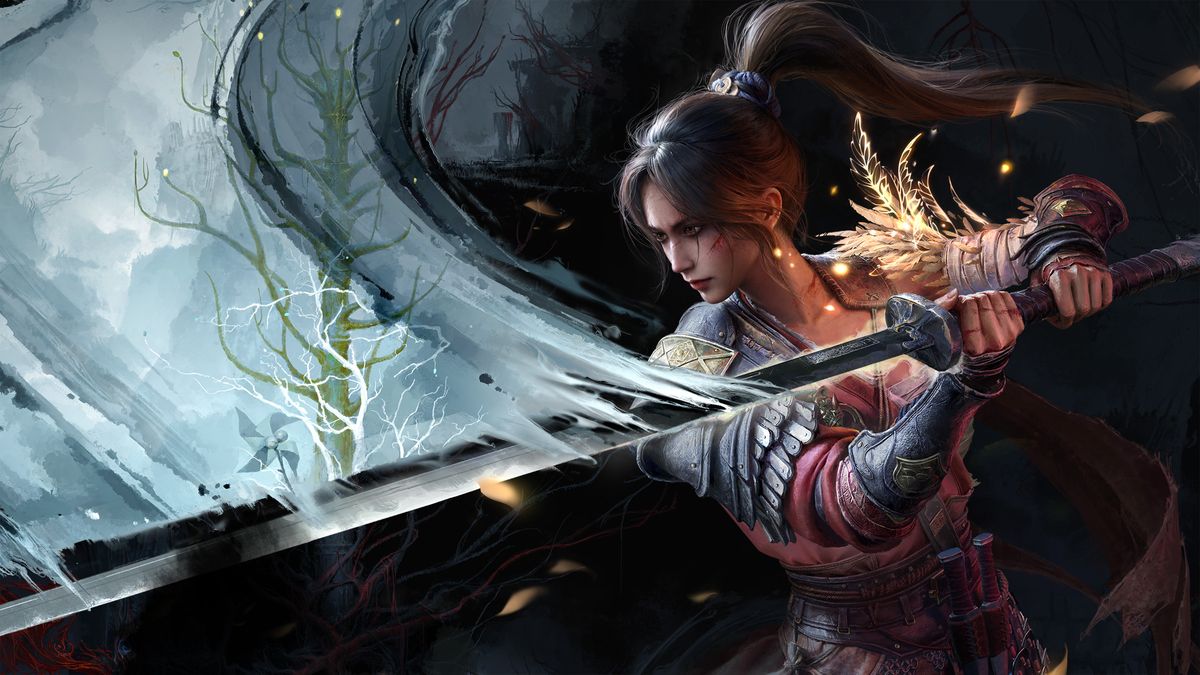
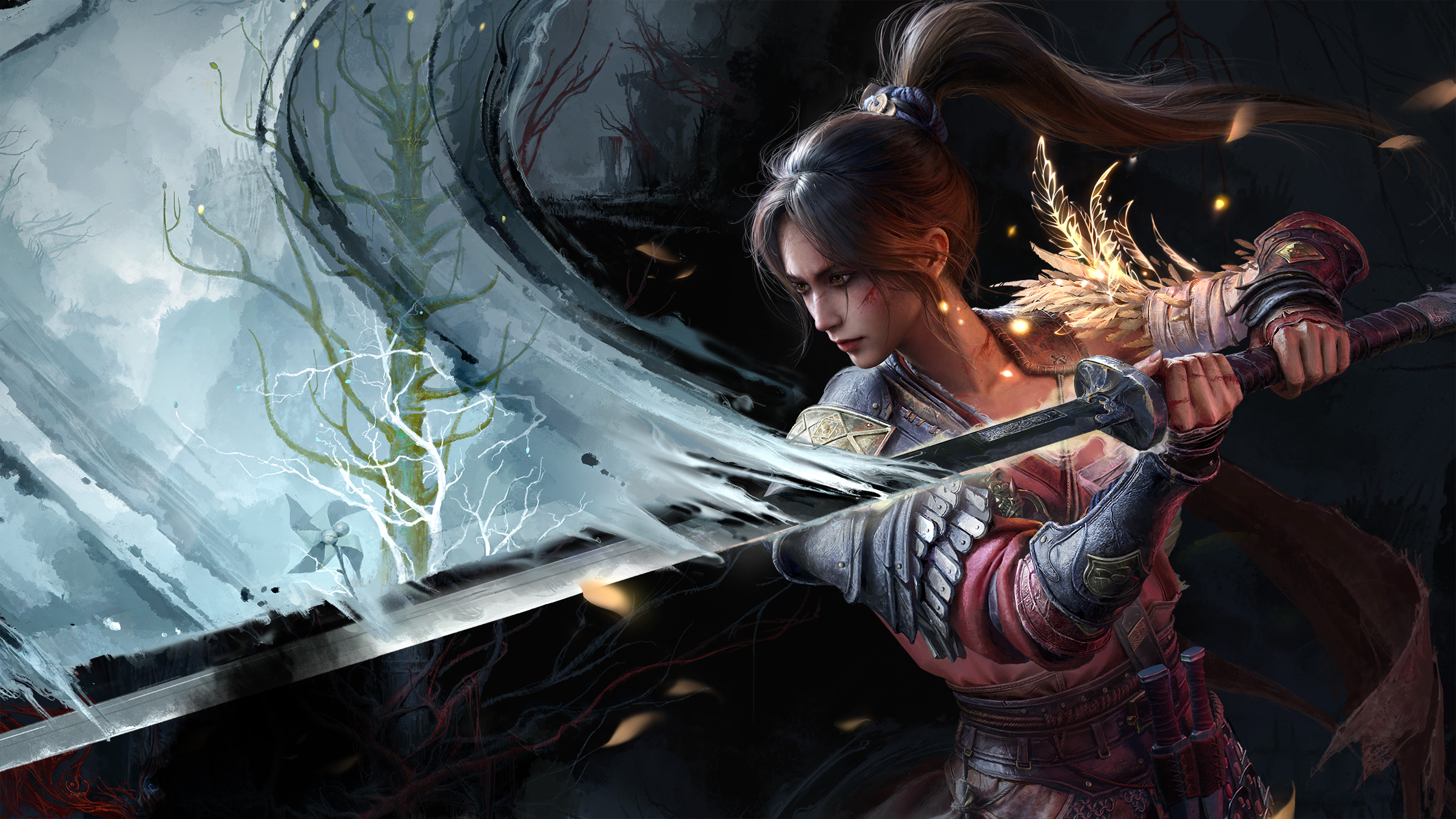
© Leenzee
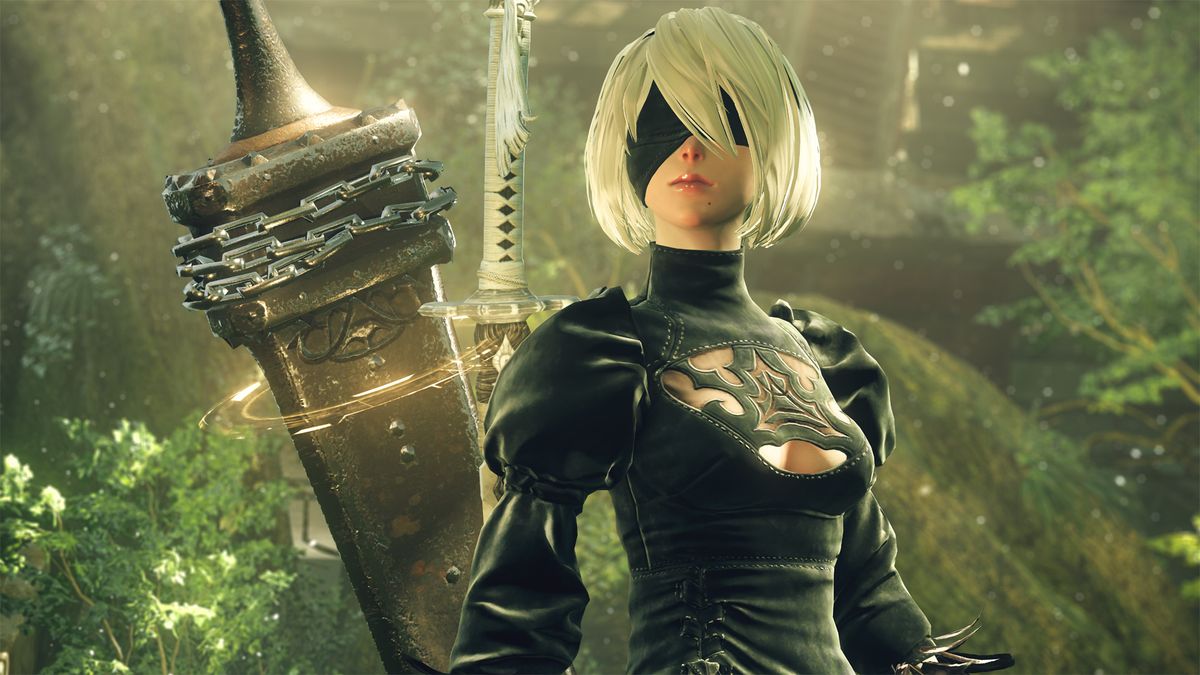

© Square Enix

The 2021 relaunch of Splitgate solidified that Valve-style portals and old-school arena shooters are two great tastes that taste great together. Splitgate 2 carries that same great melding of run-and-gun action and tactical trickery that helped the original plant its flag in the genre, so it’s starting from a good place. However, even though the addition of character classes and a wider range of weapons help bring Splitgate 2 through a new threshold of promise, some of the other shots it takes through the looking glass come back to bite it and have made me a bit less optimistic about the time I’ve spent with this free-to-play followup so far.
Visually, quite a bit has changed relative to the original. Gone is the muted, more industrial look of the battle venues, replaced by lots of vibrant colors and brighter lighting, making it look less distinctive and more like the many games trying to catch the eye of Fortnite players. In the trade up from the grubby metal walls to the cleaner, sleeker surfaces, Splitgate 2 is also absent of the more interesting features that made the original’s maps interesting and memorable. Features like deserts and trees that would be smack-dab in the middle of a map (like in one of my favorites, Oasis) are now relegated to background decorations, and every surface you’ll actually run and gun across feels samey across the 15 map options.
The returning map creator mode, now called The Lab, is powerful enough that it’s already filled with dozens and dozens of fan-made recreations of famous PvP maps from bigger games, alongside some more interesting and original user creations that serve as great side shows to the main action. But they are often too gimmicky to be considered good replacements for the developer-made maps as far as having consistent and competitive rounds of the standard modes (to the extent that's possible considering there’s no ranked mode currently available). I had a pretty hard time getting strangers to queue for some of the wackier-looking options, often sitting in lobbies alone for long periods of time in hopes some other curious Splitgaters would stumble in. I was often disappointed.
Splitgate 2’s biggest win, though, is in gameplay tweaks that have a huge impact on pacing from match to match. The signature portals are still the X-factor, allowing you to create paths between two points on the map on the fly. They are the perfect tools for setting up ambushes, tricky getaways, and even manipulating physics to slingshot you across the map. I mostly use them here like I did in 2021, pulling off one-man flanks on jerks attempting to take my team's objectives. This time, though, it only takes one button to create both ends of your personal wormhole when shot in succession, making them much more convenient to use. It comes at a slight cost, in that opening one of your portals on top of an enemy’s is the only way to close theirs, and that can force you to close off your own routes. But after logging 10 hours this week, I much prefer this minor drawback over the anti-portal grenades of yesteryear.
Movement always felt smooth, quick, and controlled in Splitgate thanks to its fast (but not too fast) sprinting and the limited jetpacks. In Splitgate 2, both of these things combine with a new slide mechanic to make getting around the maps feel like I remember my best rounds of Titanfall. The jetpack seems more powerful, with more lift before cooldown than the original’s version. Being able to stay aloft for longer means firefights more often begin or end in the air, adding a level of dynamism that makes every skirmish a challenge at every angle.
The arsenal isn’t much different than the original, though, which is a shame because it’s not very imaginative. Most weapons have slick futuristic curves and color schemes but function exactly like the assault rifles, SMGs, and carbines you’ve wielded in other games, and I wasn’t motivated to do much exploration of the options or customization of loadout presets because of it. They really just make me want to sprint to grab power weapons, which spawn with some fanfare on neutral points during matches, as soon as possible. These returning super guns have gotten a couple of notable additions to their lineup, including my favorite: a pair of machine pistols that can be combined to form a longer machine gun when aiming down the sights. These are all awesome, game-changing weapons that are worth the effort to secure every time they’re available.
Mechanically, the biggest change to the way Splitgate 2 plays is the addition of three character classes, avatars of competing corporate entities who settle their differences in this futuristic sport of gun-toting portal slipping. Sabrask, Meridian, and Aeros all have their own unique active abilities, like Sabrask’s Smart Wall, which plops a one-way bullet shield that protects anyone standing behind it while being free to shoot through it at the enemy (much like non-portable version of Reinhardt’s shield in Overwatch). They each also have passive effects that they can grant their whole team simply by being present, incentivizing teams to have at least one of each in play. That means actives are more obviously impactful than the passives, largely because I’ve yet to play a game where every team involved wasn’t receiving boosted health regen from Meridian and faster ability and equipment recharges from Aeros and Sabrask, respectively. Is it really a “boost” if it’s basically the standard?
I think there’s an argument to be made that the choice to forgo class-based, hero shooter-y design was a keystone of the monument to the past’s simpler shooters that the original Splitgate was building. It meant every player started from the same base capabilities and had to earn every advantage during a match. I am sympathetic to this old-school Halo-style mentality, but I've come to prefer the diversity of these three new classes, which add just enough tactical expression to give old people like me a chance against fast-twitch no-scoping youth so long as I can out-think them.
Matches, regardless of which of the suite of returning modes you’re playing, are almost always more fun on smaller maps, which may not be as interesting as they were in Splitgate but at least are built to take the most advantage of portaling in a way that ensures you’re never too far from the action. Larger maps, like the ones found in the new three team, 24-player Onslaught game types that supersize Team Deathmatch and Hotzone, can feel almost lonely because you have to run a fair distance to find some other players exchanging fire before plotting your portal game. It’s a bummer then that all of these new modes rely on increasingly isolatingly large play spaces.
Across the board, it strikes me as odd that maps seem to deemphasize the advantage that using portals would have – so many objectives sit in places completely hidden from a portal wall, and it felt much more difficult to use portals for aggressive pushes. Fortunately for me, someone who mostly uses portals to set traps and for escapes, and I felt like Splitgate 2’s layouts firmly establish that my more passive approach is the right way to play. Firstly, thank you so much 1047 Games, but secondly, this means that offensive strikes on objectives, especially the ones you have to hunker down on like in Firecracker or Domination, happen with the kinds of jetpack assaults and high-energy flanks that you could do anywhere else. Even modes that require lots of movement or rotating objectives, like Splitball and Hotzone, don’t afford many more opportunities to use the feature in a way that couldn’t be done without it. The most damning realization of this came when I was playing one of the No Portals limited-time playlist maps and realizing my games didn’t feel all that different without them.
Finally, the big new marquee feature of Splitgate 2 is the battle royale mode, which at the time of this writing, I haven’t spent too much time with (hence why this review is still in progress). But from what I have played, it operates mostly as expected: many teams of four drop into a semi-random zone on the map and fight each other to be the last squad standing. The wrinkle it adds to the genre (besides portals) is that the greater map is made up of four smaller maps connected to one another by jump paths and tunnels. Splitgate 2’s version of the storm closing in around you is shutting down one of these regions, forcing all surviving squads toward each other in a shrinking set of rooms. These maps are styled as different environments – there's a snowy zone and a lava zone, for instance – so it’s easy to communicate which one you’re talking about when planning with your team. I haven’t noticed if these zones have too many differences from one another outside of how they look, though. Does the lava burn you? Does the ice make you slide uncontrollably? I’ll report back when I wrap up this review next week.

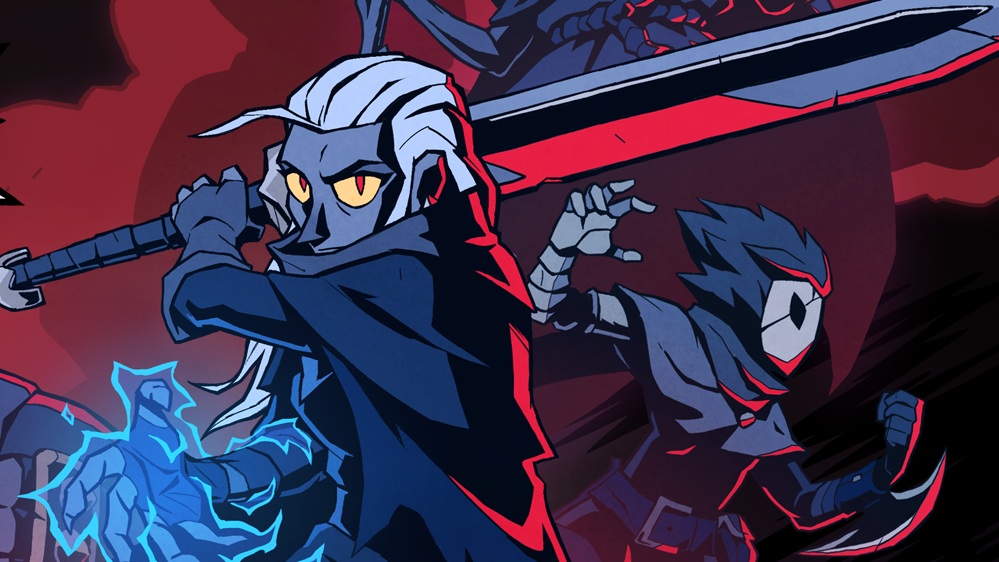
© Guard Crush / Dotemu

On June 13th, the new Mercenaries of Trarthus league launches alongside the Secrets of the Atlas Expansion. To help you tackle the new content, Maxroll has released a major update including their new PoEPlanner tool, new and updated league starters, PoB import/export, and much more!
In the Mercenaries of Trathus Challenge League, players encounter one special Mercenary per zone, each with their own personalities, different skills, items, and builds. You may also find "Infamous" Mercenaries, which are far less common but carry far better items. Mercenaries have a lot of interesting buildcraft implications that we look forward to exploring more after the league launches.

Defeat Mercenaries to gain different rewards based on which option you picked before the duel:

Learn more about Mercenaries of Trarthus and Secrets of the Atlas with Maxroll’s reveal overview post! Or take a deeper dive by reading the PoE 3.26 patch notes.
Here are all of the new and updated league starters for the 3.26 Mercenaries of Trarthus and Secrets of the Atlas update, straight from the experts at Maxroll.

Volcanic Fissure of Snaking is shaping up to be one of the most popular league starter picks for Mercenaries of Trarthus. Maxroll has 2 guides for this: a Berserker setup from Crouching_Tuna which is focused on speed and damage, plus the Slayer version from Carn that has continuous leech effects.
Zizaran’s new Earthquake Gladiator is a big bonk bleed build. Earthquake’s Aftershocks hit hard, making them perfect for inflicting a large bleed on tankier enemies. Gladiator provides explosions thanks to Gratuitous Violence, and easy defenses through Block scaling nodes like More than Skill.
The new Rolling Magma Mine Saboteur from Goratha is a hot league starter that unleashes bouncing balls of fiery destruction. This build takes advantage of the new Shrapnel Specialist node from Saboteur to push Rolling Magma and your GPU to the max!
The Glacial Cascade Elementalist from Aer0 takes advantage of all the golemancer buffs to bring a personal support squad to any fight. When you position correctly, Glacial Cascade deals immense damage with its final burst.
The Tornado of Elemental Turbulence Inquisitor from Velyna fills the screen with deadly vortexes that sweep across the battlefield. Thanks to the Inquisitor ascendancy, this build leverages both life and energy shield for a comfortable mapping experience.

Explosive Arrow Ballista Ignite has long been a league start staple in Path of Exile. You can play it as a tanky Champion from Zizaran, which excels in both Hardcore and Solo Self Found, or take advantage of the Elementalist buffs to play a higher damage version of the build from Palsteron.
Another ignite setup (more focused on the SSF experience) that benefits from the Elementalist buffs is Zizaran’s Wave of Conviction Ignite Elementalist.
Next up, Goratha’s Eviscerate Bleed Gladiator turns the entire screen into explosions of blood and monster guts. This mapping-focused build is all about going fast and clearing screens.
Maxroll’s Necromancer-in-Chief HelmBreaker has updated all 3 of his minion guides. The classic Poison Summon Raging Spirits is still a great choice in 3.26. Alternatively, if you want to go all in on the minion fantasy, use the Chaos Minion Army Necromancer to roleplay as a battlefield commander while your mindless dead kill everything for you. Last up, if you’re feeling a bit more experimental, check out the Poison Ranged Animate Weapons Necromancer build.
Lightning Arrow Deadeye is an incredibly consistent league start choice for players who enjoy bow builds. This setup from Crouching_Tuna gets you off to a strong start and can later be converted into Elemental Hit of the Spectrum.
If melee is more of your style, check out Carn’s Ground Slam of Earthshaking Slayer, a titanic build designed to shatter foes with ease.
Aer0’s Ice Trap Trickster creates icy doughnuts of destruction, trapping monsters within an icy grave. While a bit less tanky than some of the above builds, Ice Trap is easy to get off the ground and frozen enemies can’t fight back.
If you prefer mines to Traps Aer0’s Ice Shot of Penetration Deadeye is a glass cannon screen-clearing machine. Fire a barrage of icy arrows that explode into smaller projectiles, covering your screen in icy explosions.
Another miner on offer is the Exsanguinate Miner Trickster from CptnGarbage. This build leverages all of Trickster's “don’t get hit” energy and combines it with Exsanguinate, a spell that chains through the entire screen in an instant.
Breeze through the campaign with leveling guides set up by the Path of Exile racing legend, Havoc616, to get you to maps quickly and easily.
In addition to the build guide updates, Maxroll is revamping their currency strategies to cut out the fluff and present more of the meta farming options. Check out the Maxroll Currency section, and keep an eye out for more updates to the currency guides in the future.

For example, Crop Rotation Harvest is a strategy for the Harvest League Mechanic where you play a mini-game of buffing your crops to get the most juice out of a single plot!
Maxroll’s new PoEPlanner tool is fresh off the presses for 3.26. This tool works very similarly to their popular PoE2Planner tool, allowing Path of Exile players to theorycraft and share builds with ease while also providing a public build database to browse other people's creations.

Getting started is straightforward; you can either select your ascendancy on the left to begin making a planner from scratch or link your Path of Exile account to import a character directly using the large blue button on the right. The gear on the right side is also where you go to save a profile.

The Maxroll PoEPlanner supports a lot of modules, but you don't need to use all of them. If you leave a section blank, it won't be visible when people browse the build. The exception here is required sections like passives, skills, or gear; don't leave these blank!
Want even more builds? Then check out more builds from the Maxroll Path of Exile team, or browse the Community Builds section to see what other Exiles are cooking up.
Here are a few planners from the Maxroll Path of Exile Team:
In addition to the new tool, Maxroll partnered with the Path of Building team to support importing and exporting directly from this popular community tool. You can see build information, including configuration settings at a glance. You can find this on Maxroll’s PoB page.
C3ntrax has updated the PoExchange tool. The most prominent feature is direct integration to the Maxroll website. This means getting notifications for sales even when you’re browsing build guides or using the planner and seamless switching between PoExchange and the rest of Maxroll.
Written by IGN Staff with the help of the Maxroll Path of Exile Team.

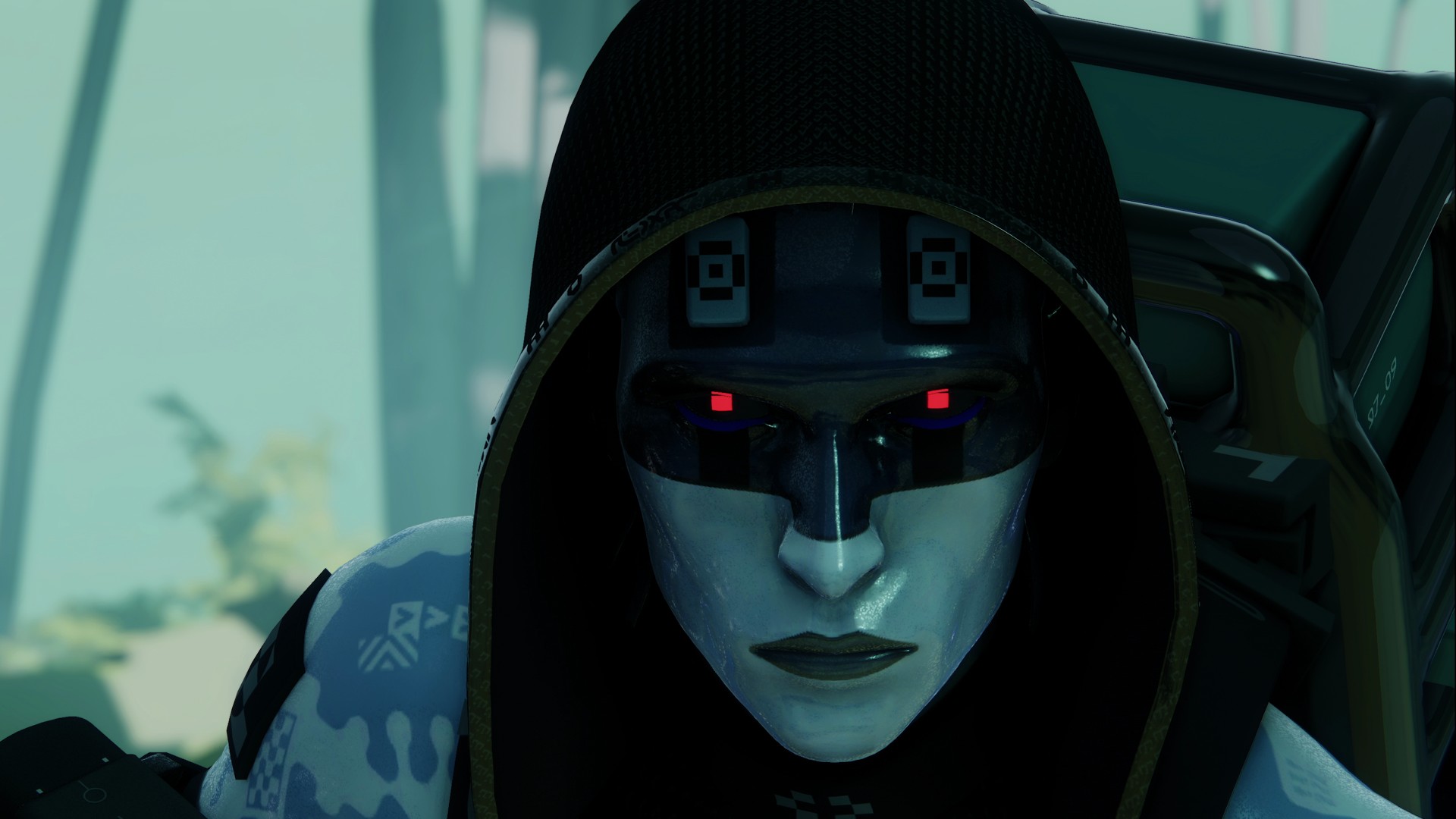
© Bungie

Rick and Morty has been a staple at Oni Press for a decade now (hence the publisher recently collecting the first 100 Rick and Morty comics in one massive set). But now, the publisher is also reaching another Rick and Morty milestone. They're about to kick off the franchise's first crossover event in the form of Rick and Morty vs. The Universe.
Rick and Morty vs. The Universe will unfold as both a core four-issue miniseries and three tie-in one-shots. The main series is written by Daniel Kibblesmith (a veteran of the animated series) and illustrated by Jarrett Williams (Speed Force). The tie-ins feature work by Kibblesmith, Jody Houser (Star Wars: The Rise of Skywalker), Phil Murphy (Adventure Time), Jake Black (Rick and Morty: Finals Week), Suzi Blake (Aggretsuko: Out To Lunch), Alex Firer (Rick and Morty), and Fred C. Stresing (Invader Zim).
Check out the slideshow gallery below for an exclusive preview of Rick and Morty vs. The Universe:
The title isn't misleading in this case. This crossover literally pits Rick Sanchez and his grandson against entire, anthropomorphized universes. It all starts when Rick and Morty's original home, Universe Prime, decides to get married to the Parmesan Dimension, and things go haywire from there. Here's Oni's official description of the storyline:
Rick’s old buddy Universe Prime (where Rick and Morty Cronenberg’d Earth) has reached his UNIVERSAL HALF-LIFE and is getting MARRIED—to the female-presenting embodiment of the Parmesan Dimension! (Where they currently live!) He’s found true love and wants his old pal Rick to plan his bachelor party! WHAT COULD GO WRONG? Answer: Pretty much everything . . . and it is all Rick’s fault! Now Rick and Morty are on the run from EVERY SINGLE UNIVERSE THEY’VE EVER MESSED WITH—meaning, no matter what dimension they escape to, the universe will literally be against them. And, to survive, Rick will be forced to do something he hoped he would never have to do—a last resort of EPIC PROPORTIONS!
Rick and Morty vs. The Universe #1 launches on July 9, 2025, with the crossover running through October.
For more Rick and Morty fun, check out IGN's spoiler-free review of Season 8 and see the top 20 Rick and Morty episodes.
Jesse is a mild-mannered staff writer for IGN. Allow him to lend a machete to your intellectual thicket by following @jschedeen on BlueSky.

In 2024, LEGO began the most ambitious build project the company has ever attempted: a fully realized, minifigure-scale re-creation of Hogwarts Castle, made famous by the Harry Potter franchise. A single set of this size and scope would be impractically large and prohibitively expensive. So instead, LEGO is releasing numerous smaller sets that, when combined, will form the full castle. It's a truly massive undertaking.
This is an ongoing project; LEGO has not announced the end date for the final set. But based on their current pace, it's going to be years before the project finally wraps.
We've been building the LEGO Hogwarts Castle since it launched, and we will continue building and adding to it until it's complete. If you would like to do the same? it's not too late to start, although LEGO will retire several key sets at the end of the year.
Here is every set released so far that comprises the modular LEGO Hogwarts Castle, currently in progress. We've included a grand piece count and price count at the bottom, which we will update as the castle continues to grow. Lastly, we took and included some photos of the castle as it currently stands, so you can see its current progression.
These are the sets you'll need to buy if you want to create your own enormous LEGO version of Hogwarts Castle. But these are just the sets released to date – more will be added in the future.

The Owlery is the first component of the Hogwarts Castle. If you're looking to cut a corner or two and save on costs, you might start with this one, because it's an independent structure apart from the main building. It has winter-themed, snow-capped spires, so if you're after aesthetic consistency, you might also want to swap out a few pieces to make the Owlery match seasons with the rest of the castle.

Both the Boathouse and the Owlery share the same gray-colored hue on their spires. Back in 2024, this led many LEGO fans to speculate that these sets marked the beginning of a new Hogwarts Castle, even though it hadn't been officially announced yet. The Boathouse includes two small wooden boats, so you can recreate Harry's first-year arrival at Hogwarts.

This is the first Hogwarts classroom set, which can swap in to replace another room in the castle. To use an example: The Great Hall comes with the girl's bathroom in the dungeon, where the troll attacks Hermione in the first book/movie. It's nice looking diorama, but it's extremely scene specific, and it doesn't really fit in with the rest of the castle. So, if you want to, you can swap out the troll scene with Professor Snape's Potions Classroom, which is a lot more detailed and colorful, and contains a wider range of roleplay opportunities. If you don't get the Potions Classroom, it's not going to look, at least outwardly, like something's missing. But still, it's hard to imagine Hogwarts without it.

The first major 'essential' building block in the Hogwarts Castle, the Great Hall includes the eponymous Hall – where the Sorting Ceremonies and Start and End-of-Term Feasts take place – and three additional rooms: the girl's bathroom where the troll attacked Hermione; a narrow corridor; and the Hufflepuff Common Room. The Great Hall connects to the Boathouse at the bottom of the outer stairwell; connects to the Main Tower at its side; and can swap its bathroom with the Potions Classroom. We built and photographed this one at the time of its launch.

This set recreeates the Dueling Club scene from Chamber of Secrets, in which Draco conjures a snake and Harry uses Parseltongue to stop it from attacking Justin Finch-Fletchley. There's a gimmicked floor in the table that makes the minifigures fly backwards off of it. If you want, you can swap out the house tables in the Great Hall with the Dueling Club table. It's a fun alternative, but overall inessential to the larger castle, if that's what you're going for.

Professor Flitwick's Charms Classroom lets you recreate the Wingardium Leviosa scene from the first book/movie ("It's Levi-O-sa! Not Levio-SA."). The Professor Flitwick minifigure has his original movie appearance, when the filmmakers leaned into his goblin hertitage. The Charms Classroom slots into the Flying Lessons set, and can swap with the Quidditch equipment room.

On the exterior, this set depicts the scene where Harry rides a broom for the first time (it even includes a minifigure of Madame Hooch). But on the interior, this is a Professor McGonagall-centric set. It includes the aforementioned Quidditch equipment room, but it also contains McGonagall's office and McGonagall's Transfiguration classroom. The Flying Lessons set doesn't connect to any of the current sets; it'll fit in later, once we have more of the Castle completed.

The Herbology Classroom includes a rare Professor Sprout minifigure, plus Hermione and Neville in their greenhouse smocks and gloves. The greenhouse feels appropriately overgrown and busy, with three mandrake plants and accompanying earmuff accessories. It is a freestanding structure from the larger Hogwarts Castle, although unlike the Owlery, it'll be in close proximity to it.

The second major Hogwarts Castle set, the Main Tower connects directly to the Great Hall on its right side. And taken together (see more photos below), you really get a sense of size and scope. The interior contains three of the rooms from the Sorcerer's Stone trials: the Devil's Snare room, the Flying Keys room, and the Chess Set room. One floor up is Fluffy's room and a narrow corridor. One floor up from that is the Gryffindor Common Room. And then the actual Main Tower contains three staircases (two of them rotate), Dumbledore's office, and a secret room containing the Mirror of Erised. We built and photographed this set at launch.
For photos of the entire Hogwarts Castle build so far, see below.

The current total piece count stands at 6,381.

The current total price stands at $757.91.

Right prior to releasing the Owlery, LEGO released an architectural build of Hogwarts Castle in miniature form. It has the same grey spires as the modular castle, and because of its timing, my theory is that it is a rough blueprint for how the final castle will look.
Above, I've circled the parts of the modular castle that have been released. So you can see we have quite a bit (close to two-thirds) of the final building to go. Maybe the Viaduct Bridge that leads from the Great Hall to the Central Hall is next? That would be a smaller set. And then, it's likely that the Central Hall would be the next major build after that.
But that's all pure speculation. We'll have to wait and see.
Be sure to check out our lists of the best Star Wars LEGO sets and best Harry Potter LEGO sets. If you prefer superheroes., you can take a look at the best Marvel LEGO sets as well.
Kevin Wong is a contributing freelancer for IGN, specializing in LEGO. He's also been published in Complex, Engadget, Gamespot, Kotaku, and more. Follow him on Twitter at @kevinjameswong.

Tons of Magic: The Gathering sealed products are on sale at Amazon right now. From commander decks and bundles to booster boxes and prerelease kits, if you're a MTG player you should definitely check out this sale. Aetherdrift, one of the latest expansions from 2025, is one of the main focuses of the sale, but you can pick up some other sets like the Tarkir: Dragonstorm Jeskai Striker Commander deck.
Be sure to also check out our MTG Father's Day gift guide for the best gifts and accessories for that special Magic player in your life.
Here's how these products break down, like what's included and how much they cost:
Booster boxes are the perfect way to start and bolster your collection. The contents of a single collector booster pack vary by set, but here you can find exclusive foils, Japan Showcase cards, or a special serialized card. The booster box comes with 12 packs each with 15 cards inside and two foil box toppers (special art foil cards).
Bundles are a more affordabale way to jumpstart your collection. These typically include nine booster packs, a promotional or alternate art card, 40 extra basic land cards (20 foil, 20 regular), and a spindown life counter die. You can also use this as a card storage box.
Aetherdrift's Finish Line bundle is similar to the regular bundle but is a bit more premium. It includes six booster packs, three extended art cards, two foil box toppers, 20 foil basic lands, and special spindown life counter die.
Prerelease kits are usually sold the week before a set's wide release and contain a certain color or archetype that ties into the set's mechanic. There are often leftover kits for you to purchase after a prerelease event which contains a spindown life counter die, six booster packs, a foil premium stamped card, and one special promo card.
Commander is easily the most popular casual format among both new and old players. Whenever a new set is released, commander decks (100 card single-copy format) are released alongside it. The Living Energy Commander deck is one of these, which includes the full 100-card deck, two foil borderless Commander creatures, and a deck box.
The next main set will be the Final Fantasy collaboration. Easily one of the most popular Universe Beyond set, Final Fantasy is bringing newer players on in droves. This set releases in full June 27th. You can pick up a starter kit to learn the game, one of four commander decks, play booster boxes and bundles, or single booster packs. Good luck - these go out of stock fast.
Myles Obenza is a freelance writer for IGN. Follow him on Bluesky @mylesobenza.bsky.social.

There are many terrifying foes in Elden Ring Nightreign, from standard enemies all the way up to the imposing Nightlords. But one in particular seems to give many Nightfarers pause, or even cause them to turn and flee. It's the Bell Bearing Hunter.
Now, if you've only started Elden Ring Nightreign, this could be confusing. The standard boss version of the Bell Bearing Hunter is someone you can potentially fight early on, at the conclusion of the first night while hunting the Nightlord Tricephalos. He's also a returning fight from Elden Ring proper, so you'd assume returning players would have him figured out.
But in Elden Ring Nightreign, bosses can spawn both at night's end and in the field, and pack more punch than they previously did in Elden Ring. And this version of Bell Bearing Hunter seems to be doing some real damage.
Players have been putting in hundreds upon hundreds of runs since Elden Ring Nightreign came out, and while there's certainly been discussion over which bosses are the best or most difficult, the Bell Bearing Hunter comes up pretty often. Specifically, when he's in the castle. As one post notes, he seems more powerful when he has a roof over his head? Maybe he got a good night's rest.
Different variants can also cause problems, and the Bell Bearing Hunter can also sometimes appear in other locations, too. The boss is already fairly intimidating, with a sword that he can swing in close range or wield, seemingly telekinetically, at long ranges. But in the castle? He's got some aura.
Not all hope is lost, though. One Redditor has discovered some new tech that most have probably never thought to try, that could thwart the Bell Bearing Hunter in his tracks. Or at least keep him walking in place long enough to wail on him. This user seems to have put the Bell Bearing Hunter into a permanent walk cycle by just, uh, walking at him and guarding. So taunting him into defeat, with some ranged help, might actually work?
We’ve got plenty of Nightreign tips and tricks to help you take down all the eight Nightlord Bosses, and if you’re wondering how to unlock the two locked Nightfarer Classes, check out How to Unlock the Revenant and How to Unlock the Duchess, plus How to Change Characters.
Eric is a freelance writer for IGN.

Magic: The Gathering's Final Fantasy Universes Beyond set finally arrives today, and it does so atop a wave of hype. It’s already breaking sales records all over, with a huge set encompassing all sixteen mainline games in Square Enix’s long-running RPG franchise, but not all cards are created equal.
Some cards are already seeing astronomical prices from pre-release, but we imagine they’ll settle down at least a little bit in the coming days and weeks.
Still, with some chase cards currently worth well over a thousand dollars each, you’ll naturally want to know which cards are worth looking out for, and which you might want to pick up standalone rather than ripping over hundreds of sealed boosters.
Thanks to the lovely folks at TCGPlayer, we’ve got a pretty good idea, ranging from protagonists to baddies, to those adorable chocobos.
Here are the big chase cards for Magic: The Gathering x Final Fantasy on launch day, with prices provided by TCGPlayer. While eBay is also an option (and also owns TCGPlayer), I’ve found TCGPlayer to be the most reliable way to buy single cards, with more knowledgeable (and careful) vendors when it comes to purchasing via a third-party.
Final Fantasy 13’s protagonist is all about the Stagger mechanic, teeing your foes up for double damage while also offering lifelink, first strike, and trample in a three-cost card.
She’s already up for around $44.13 for the Borderless version at the time of writing.
I love a big ol’ dragon in my Magic collection, and Bahamut certainly fits that bill. Not only does this Summon create a 9/9, but it can remove permanents, trigger card draw, and use Mega Flare to essentially finish a game of Commander. All yours for $52.61 in the borderless variant.
Rhystic Study is infamous for being a wonderful card that taxes your opponents or gives you card draw, and this new art from Final Fantasy X is plucked right from one of the game’s most heartfelt moments. It’s going to cost you, though, since it’s currently up for around $112.
The showcase version of this big ol’ beast is going for around $72.25, and is one of three fantastic Yoshitaka Amano pieces likely to be a big draw for collectors. Creating up to 20 Treasure tokens in a single turn? Yes please.
Low mana cost and double equipment triggers make Cloud very close to Stoneforge Mystic, but with some striking new anime art from Kazto Furuya. The extended art version is just shy of $50 at the time of writing.
What is Cloud without his iconic weapon? Thankfully, the Buster Sword has a borderless version worthy of such a hero. It’ll set you back a whopping $128, though!
This borderless version of Final Fantasy 9 spellcaster Vivi by Toshiyuki Itahana (character designer on the game) is the definition of a collector’s item. As a result, it costs around $100, although it’s a great Commander for an aggro burn deck.
An antagonist just as iconic as his protagonist counterpart, Sephiroth’s card art by the legendary Tetsuya Nomura is likely to make him incredibly popular. He’s currently going for just over $100, and I'd be very surprised if he’s not very, very popular in Commander decks to come.
Sure, Y’Shtola comes in the Final Fantasy 14 Commander deck, but the surge foil one is fetching a very, very high price already. TCGPlayer has it pegged at around $474 right now.
But how about some honorable mentions before we get to number one? As while the top nine features the absolute best cards you should be on the look out for, there's a few more pricey options to check in with as well, most of which are surge foil borderless variants as well!
The chase card of all chase cards, there are just 77 gold foil Traveling Chocobos out there, available. There are other versions, including Neon Ink versions going for well over $1000, but if you manage to find the gold foil, it is the one you’ll want to find when you’re cracking open Collector Boosters.
I'm going to give it to you straight right from the off. It's painfully hard to get hold of any of these sets from major retailers right now. While we saw some big restocks over the past month, pretty much everywhere is sold out of Final Fantasy MTG at the time of writing.
I can provide some handy links to bookmark so you can check back in, but for now, your best chance of securing anything will be via the most trusted third-party resellers like TCGPlayer.
Or perhaps, collectors will instead be most interested in the new Final Fantasy x Secret Lair drops, instead. It’s been a busy year for Wizards of the Coast’s limited-time mini-sets, and while the company sold out of all three Final Fantasy drops in record time (leaving many disappointed), you can still get them via third-party sellers... if you're willing to pay the inflated costs, that is.
There are a trio of Final Fantasy Secret Lair sets, Weapons, Grimoire, and Game Over, each offering unique art and names for Magic: The Gathering cards. Everything is available in standard and foil, alongside the Japanese variants as well.
But, since they've sold out, you won’t find Secret Lair drops at the same price as you’d find them directly from Wizards of the Coast (standard $30 nonfoil, $40 rainbow foil), with most being listed anywhere between $80-$150 or above.
This is a huge markup, so if you're looking to buy, be sure you're 100% informed of what you're paying for. You can buy them from eBay, but we’ve always found TCGPlayer, while still eBay-owned, to be the most secure and trustworthy way to nab Secret Lair drops post-release.
Lloyd Coombes is Gaming Editor @ Daily Star. He's a big fan of Magic: The Gathering and other collectible card games, much to his wife's dismay. He's also a tech, gaming, and fitness freelancer seen at Polygon, Eurogamer, Macworld, TechRadar, Tom’s Guide, IGN, and more.

Dave Bautista and his production company Dogbone Entertainment are set to develop Steve Lerner’s new story Cat Assassin for a new franchise that will include animated series, video games, and steps into the publishing space.
Lerner is the writer behind the beloved Annapurna Interactive game Stray. Bautista, who has enjoyed enormous post-WWE success with the likes of Guardians of the Galaxy, Dune, and Blade Runner 2049, will have creative input on the franchise, which will be developed alongside Titan1Studios.
Here's the official blurb on Cat Assassin:
Set in a gritty neo-noir world inhabited by anthropomorphized cats of all types, Cat Assassin centers on Hugh, a highly skilled assassin caught between various cartels and power brokers in a dark and twisted city. The franchise promises a unique blend of humor, action, and stealth.
“It’s been a pleasure collaborating with Titan1Studios on Cat Assassin,” Bautista said in a statement. “Their ability to build worlds through animation has been so impressive and they’ve created a truly unique world in this game that I can’t wait to share with players.”
Titan1Studios is currently working on a stealth action game for the franchise, said to be inspired by “the immersive gameplay of Assassin’s Creed, the tactical espionage of Splinter Cell, the immersive feline agility of Stray, and the fluid combat of Sifu” and “set the tone for the expansive universe that will soon follow.”
Lex Briscuso is a film and television critic and a freelance entertainment writer for IGN. You can follow her on Twitter at @nikonamerica.

Need some cash for your Car Dealership Tycoon enterprise? Look no further. We've scoured the web for all of the currently active codes available in Roblox's car-selling sim, so you can keep your business running smoothly with some free cash injections.

Below, you'll find all of the currently active and working Car Dealership Tycoon codes in June 2025 that you can redeem for free rewards:
The following Car Dealership Tycoon codes have expired and can no longer be redeemed as of June 2025:

To redeem Car Dealership Tycoon codes, boot up the game and, once you’re in, follow the steps below:
If your Car Dealership Tycoon code isn’t working, it’s likely due to one of two scenarios. The first is that the code was inputted incorrectly. Check the spelling and that the case is correct, then redeem again. You can even copy and paste the codes directly from this article over to Roblox if you want to make sure you’re inputting them correctly.
The other possibility is the code has expired or you’ve already used it. In this scenario, you should see an error message appear in the codes bar informing you that the code has already been redeemed or is invalid.
If you want to hunt down some Car Dealership Tycoon codes on your own, you'll have to scout through several different social accounts for the game. The main spots you should be checking are the CDT update info channel in the game's official Discord server, Foxzie's YouTube channel, and Foxzie's X account. All three will be updated from time to time with codes, so make sure you're subscribed to each to keep up to date with new code drops.
Car Dealership Tycoon is exactly what it says on the tin. You're offered the keys to your very own car dealership, and from there, your mission is to build it, customize it, and purchase new cars to display on the show floor. As you grow, you can take part in a variety of activities to increase your cash flow, including taking to the streets to race other players and avoiding police in high speed chases. So, do you have what it takes to cement your dealership as the go-to hub for the most luxurious rides in the city?
Callum Williams is an IGN freelancer covering features and guides. When he's away from his desk, you can usually find him obsessing over the lore of the latest obscure indie horror game or bashing his head against a boss in the newest soulslike. You can catch him over on Twitter at @CaIIumWilliams.
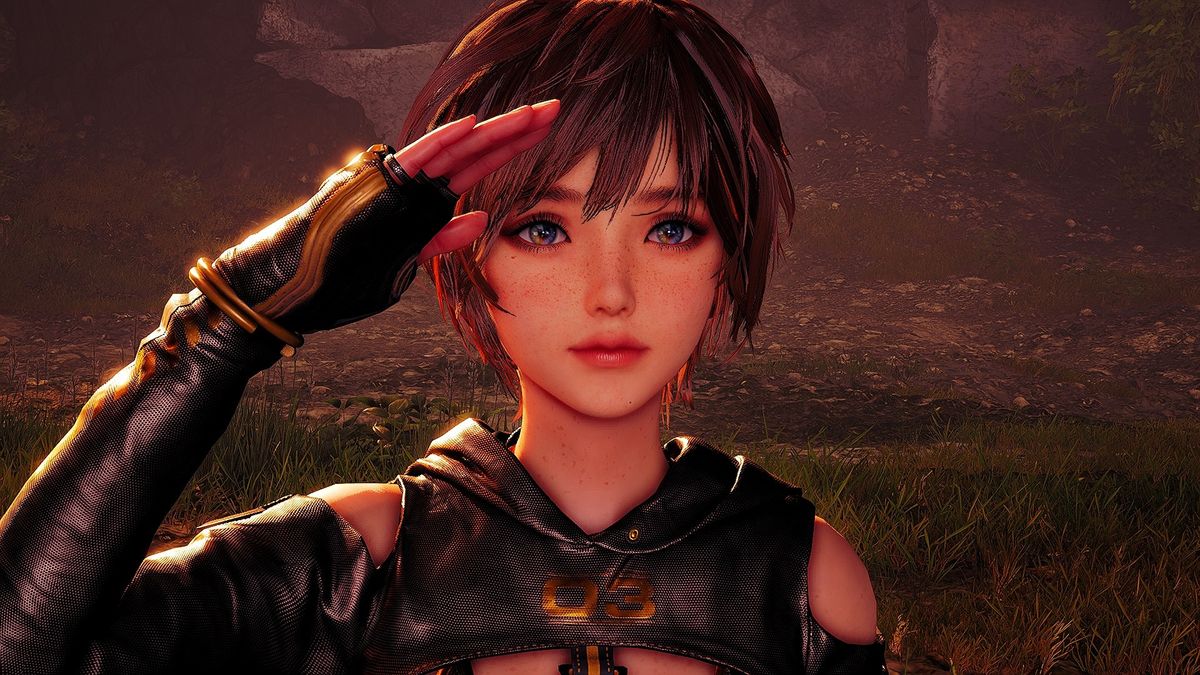

© Shift Up, Steam user _SamuelBrytton_